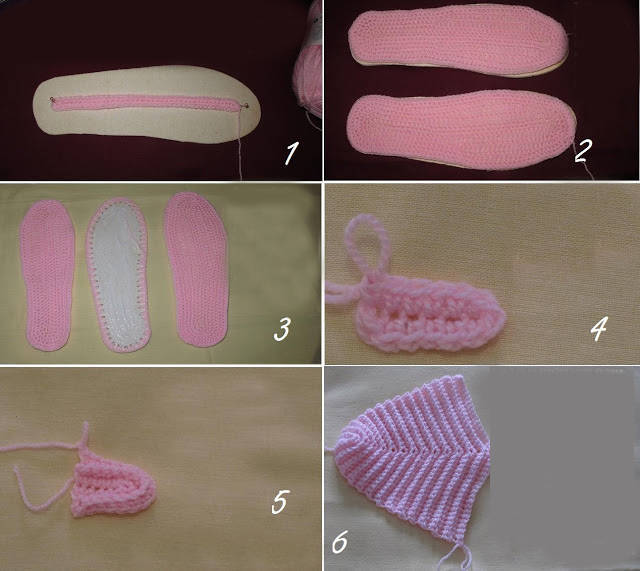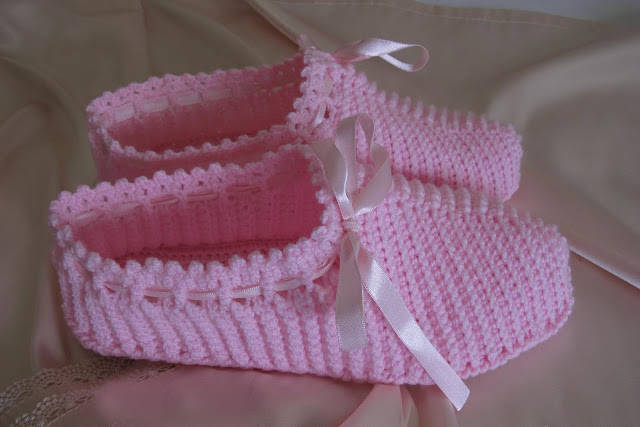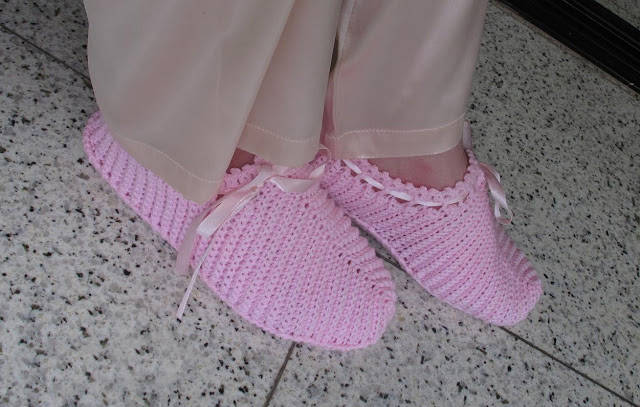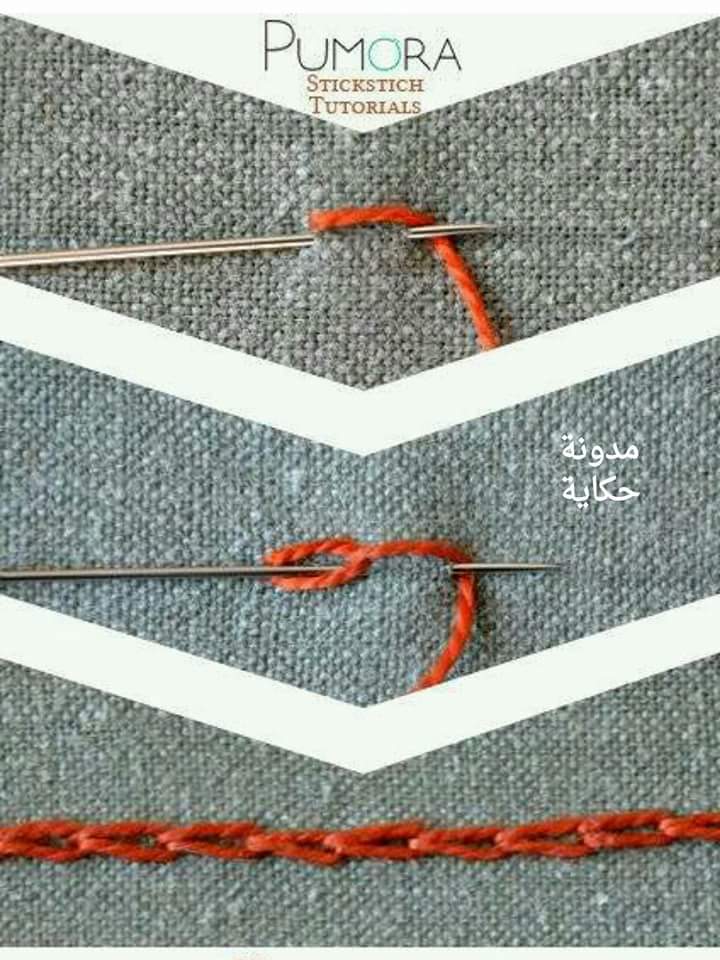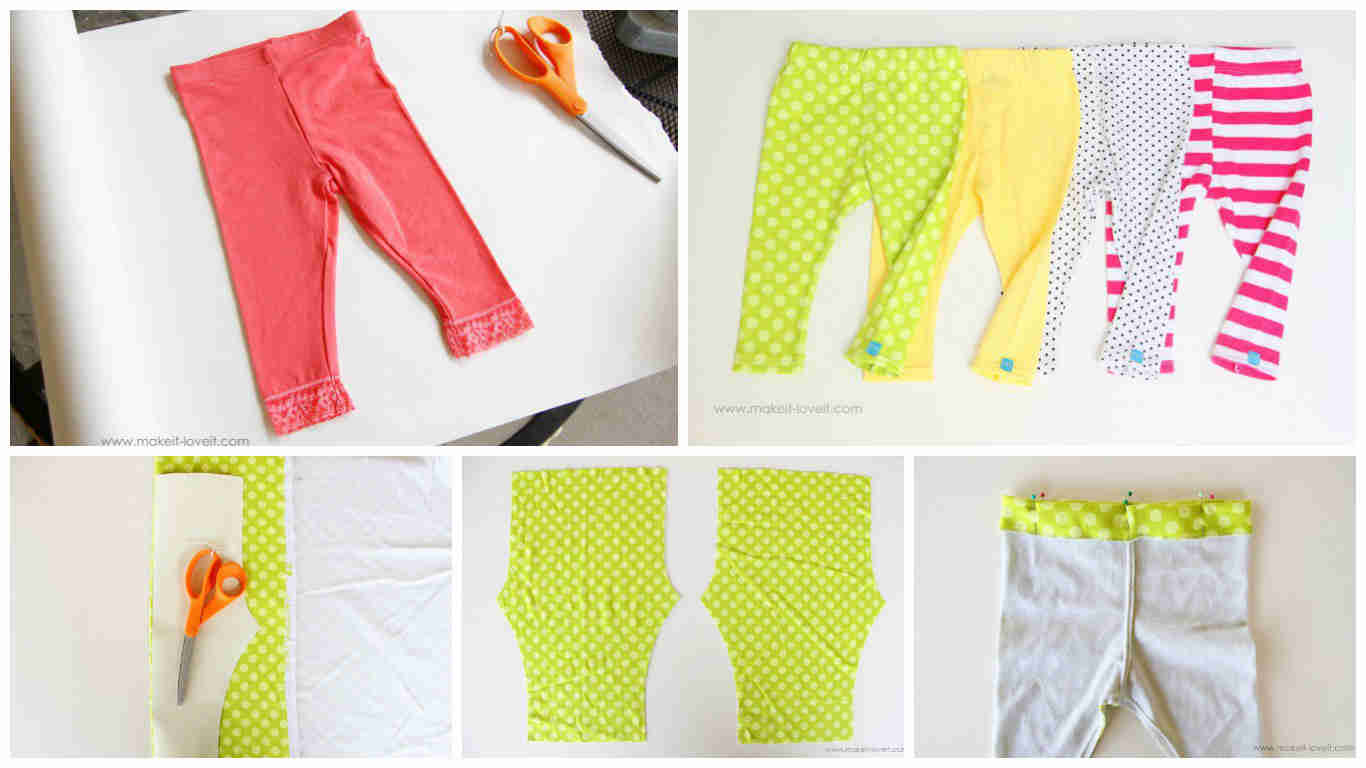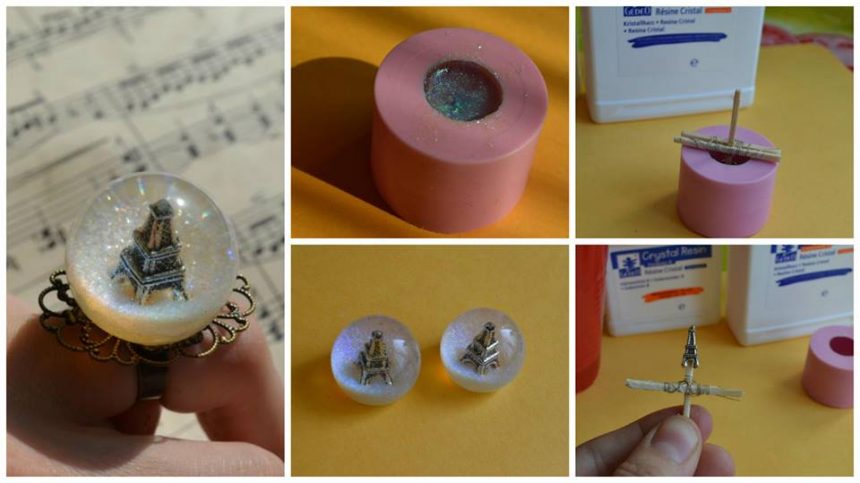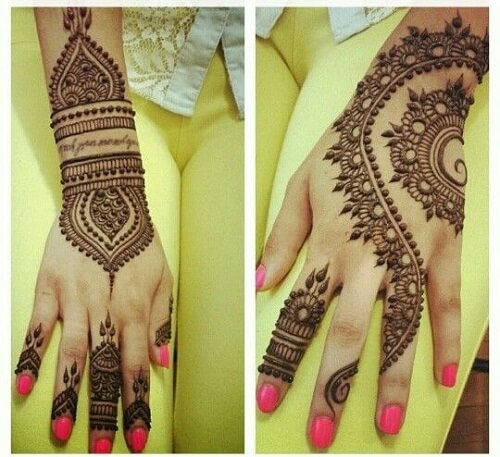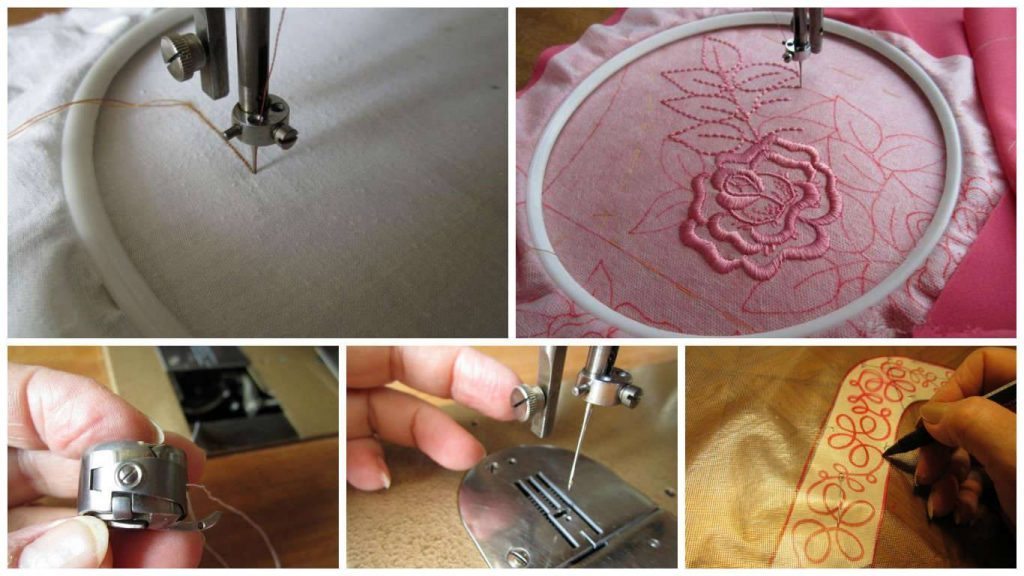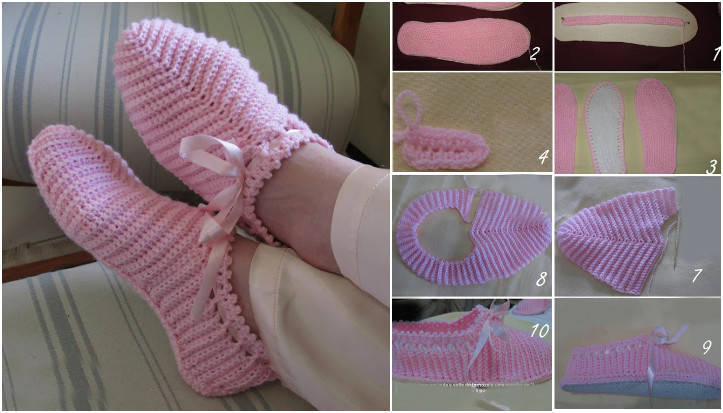
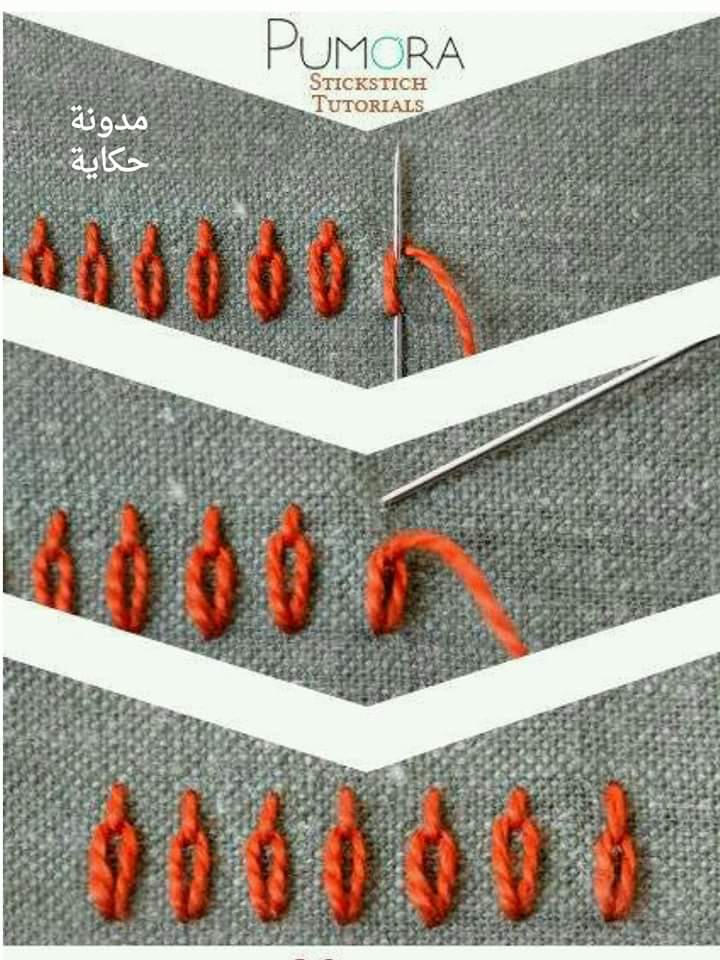
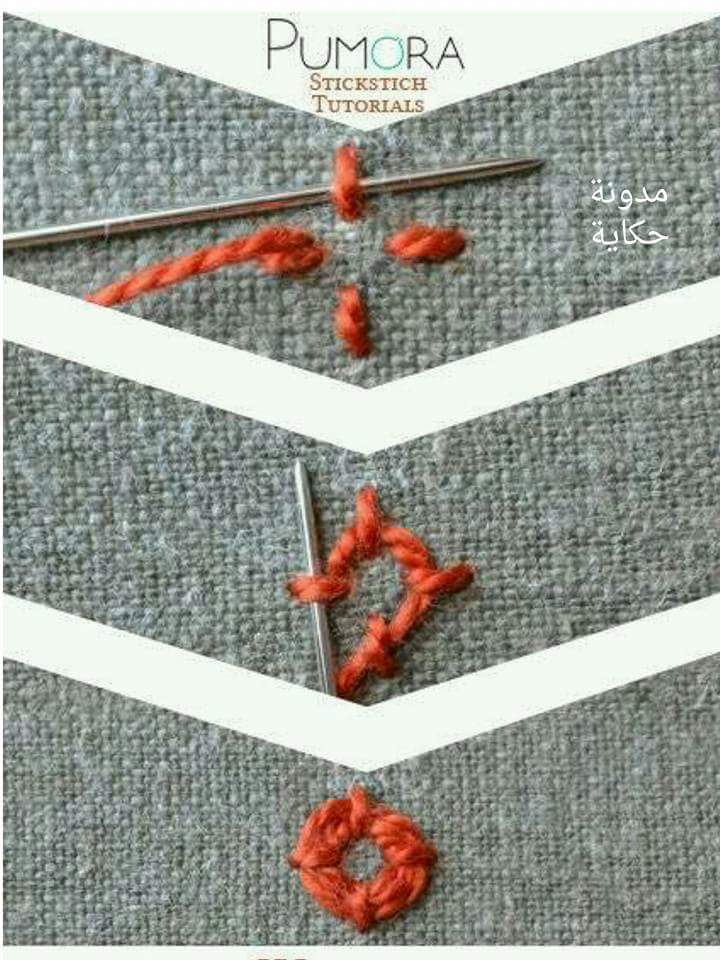
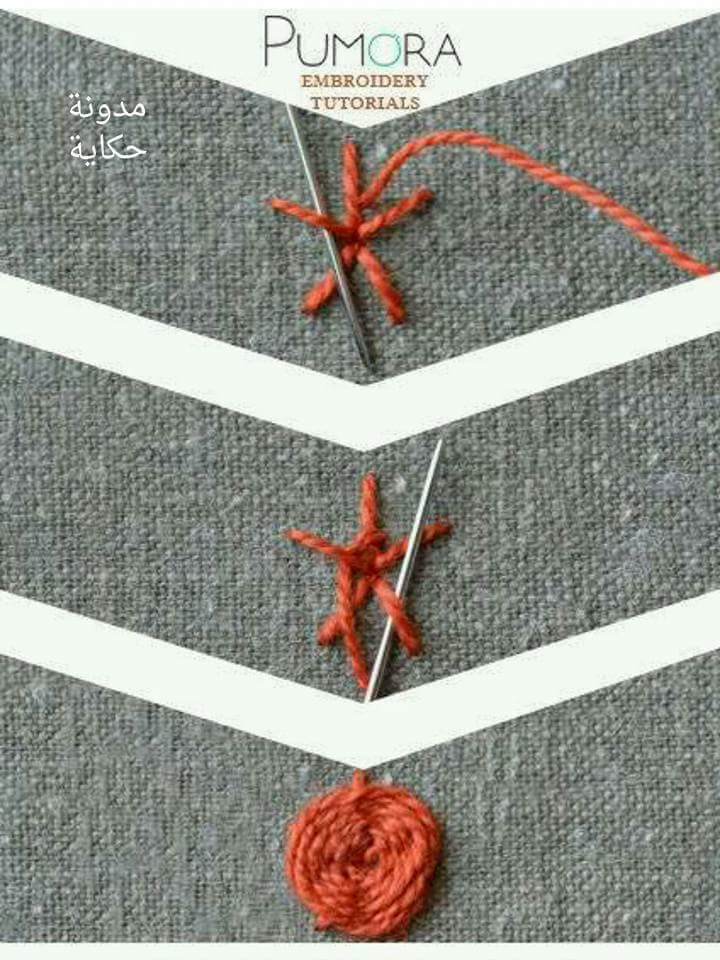
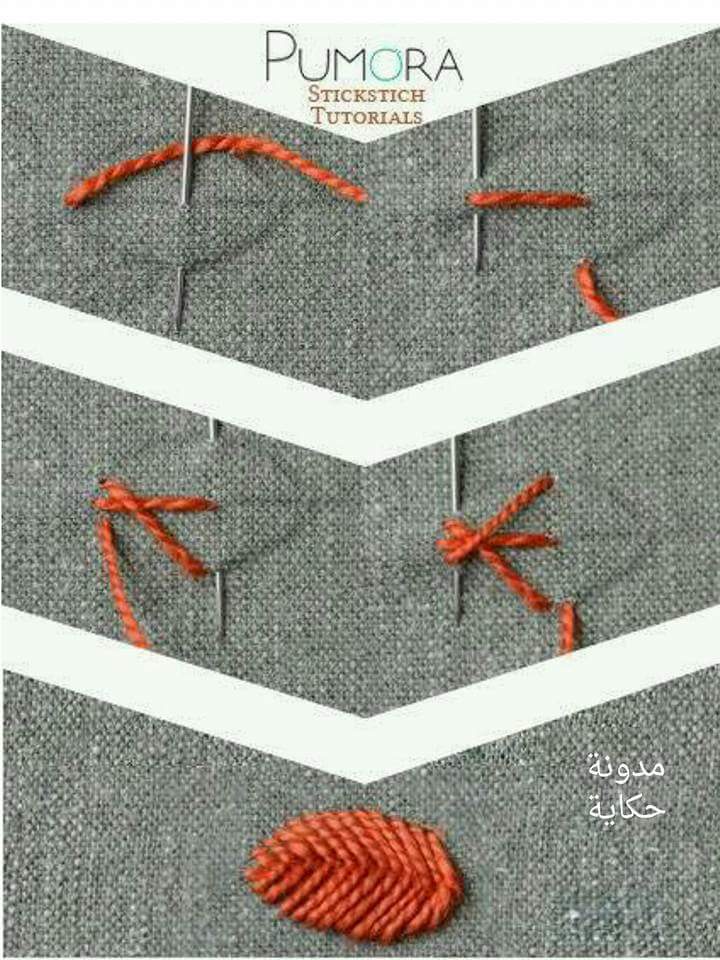
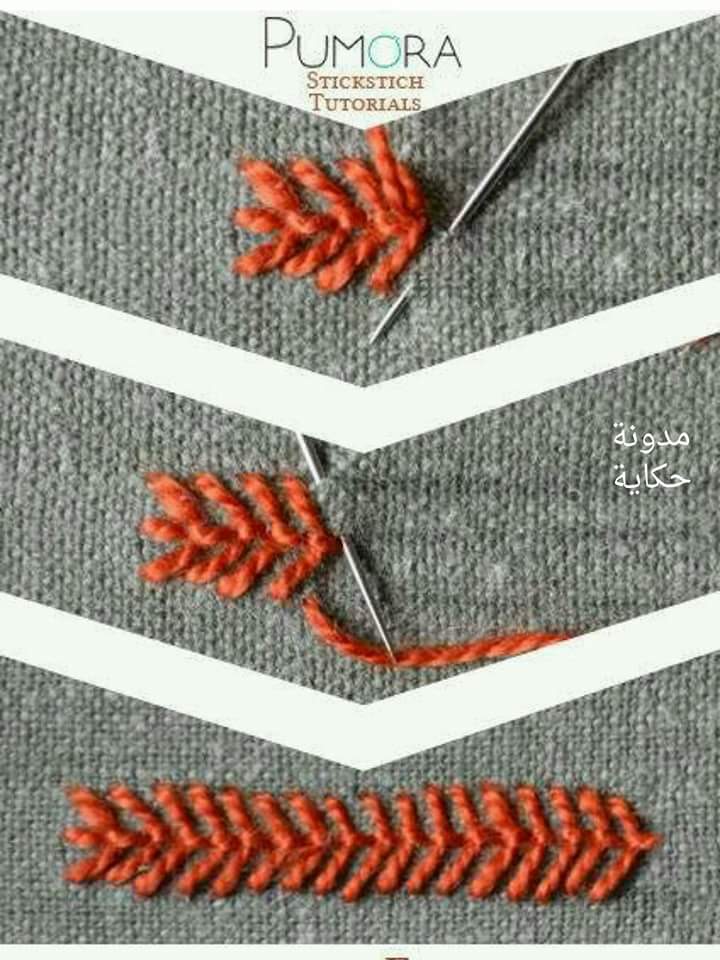
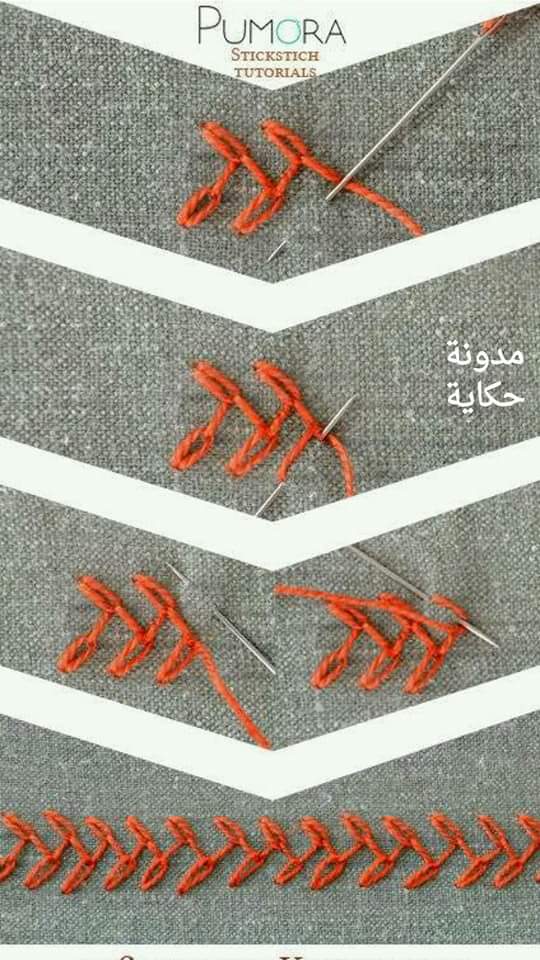
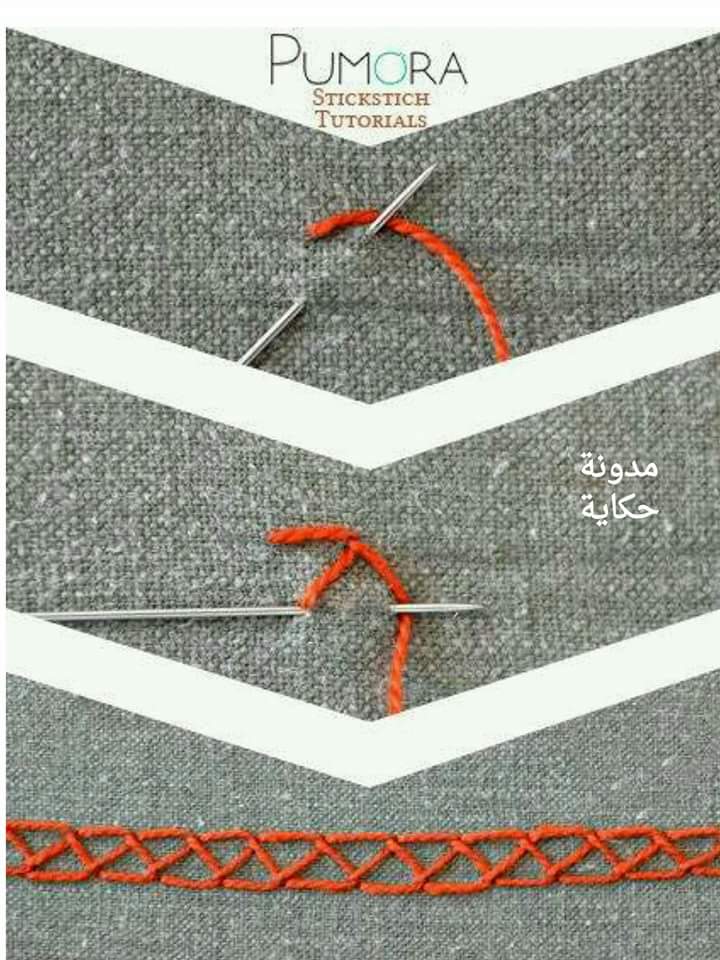


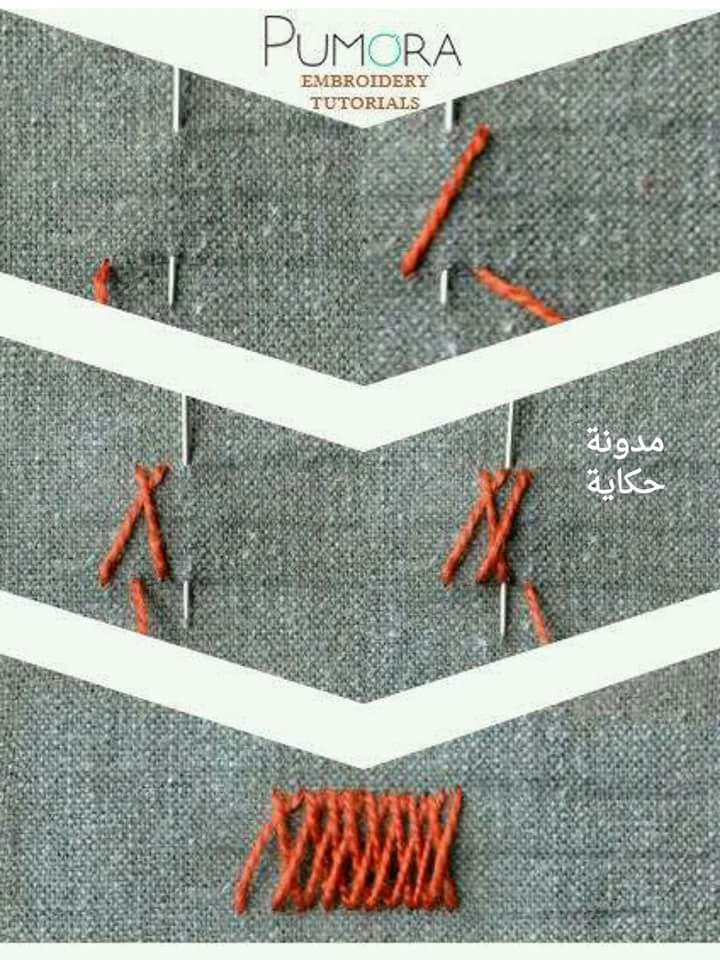

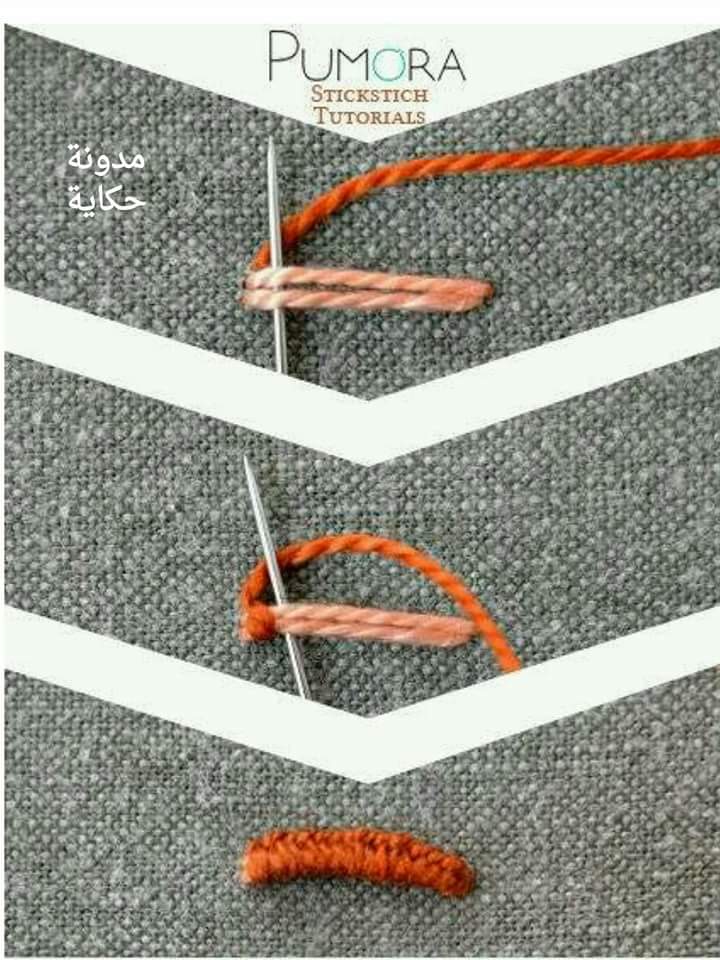
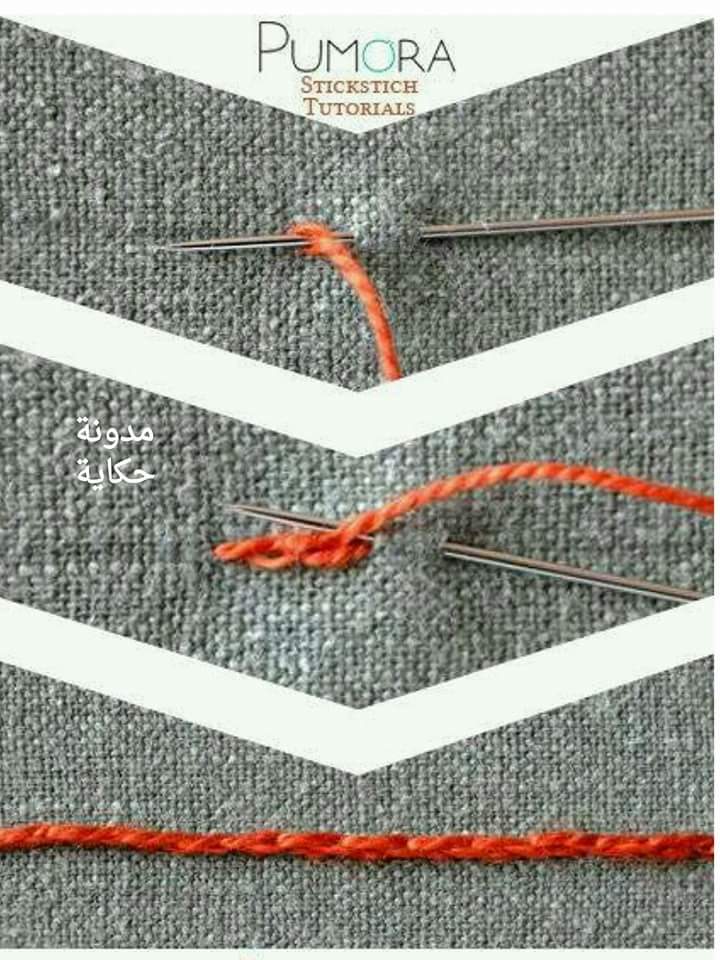
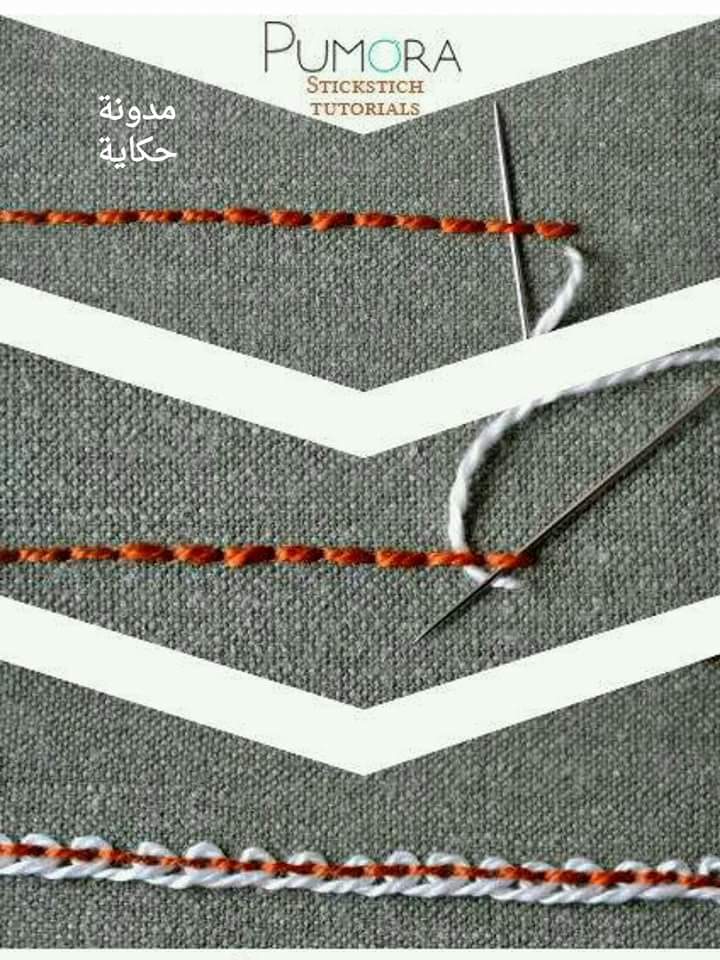

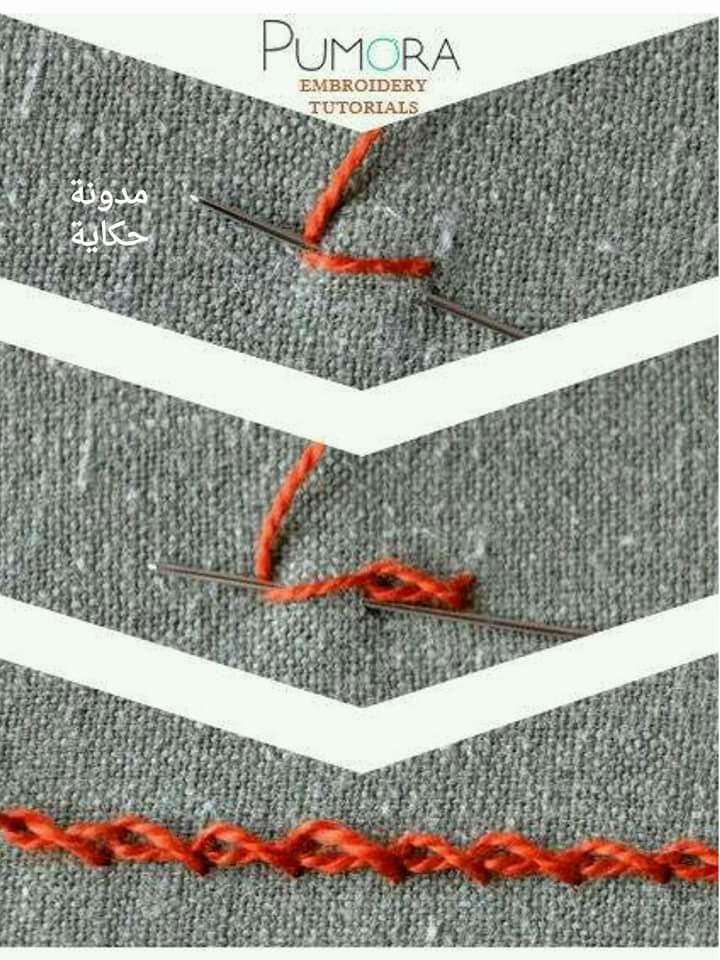


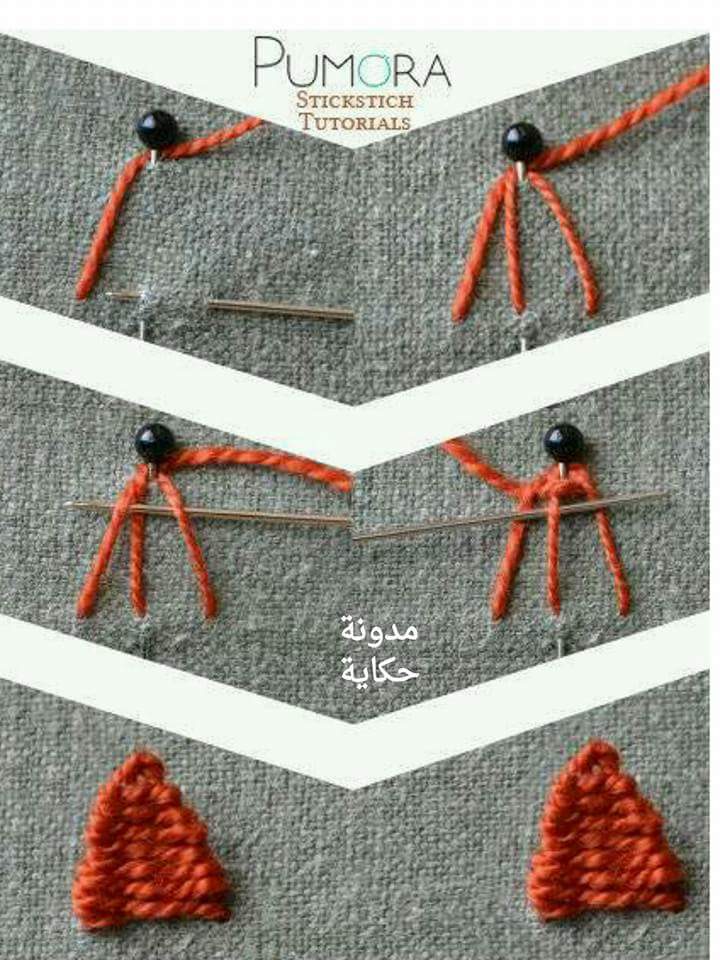
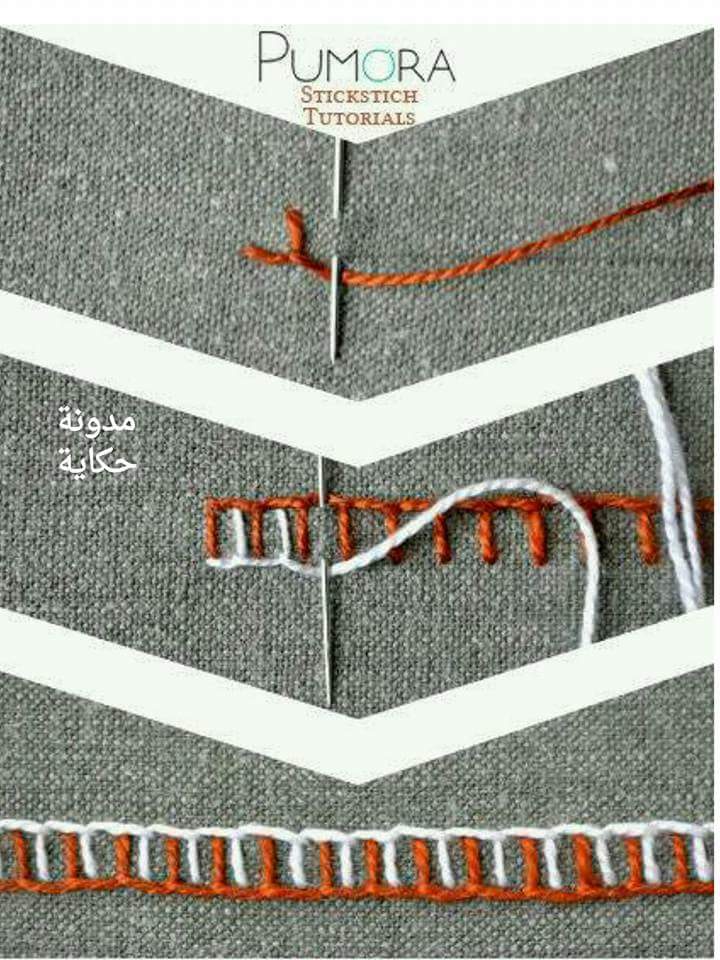

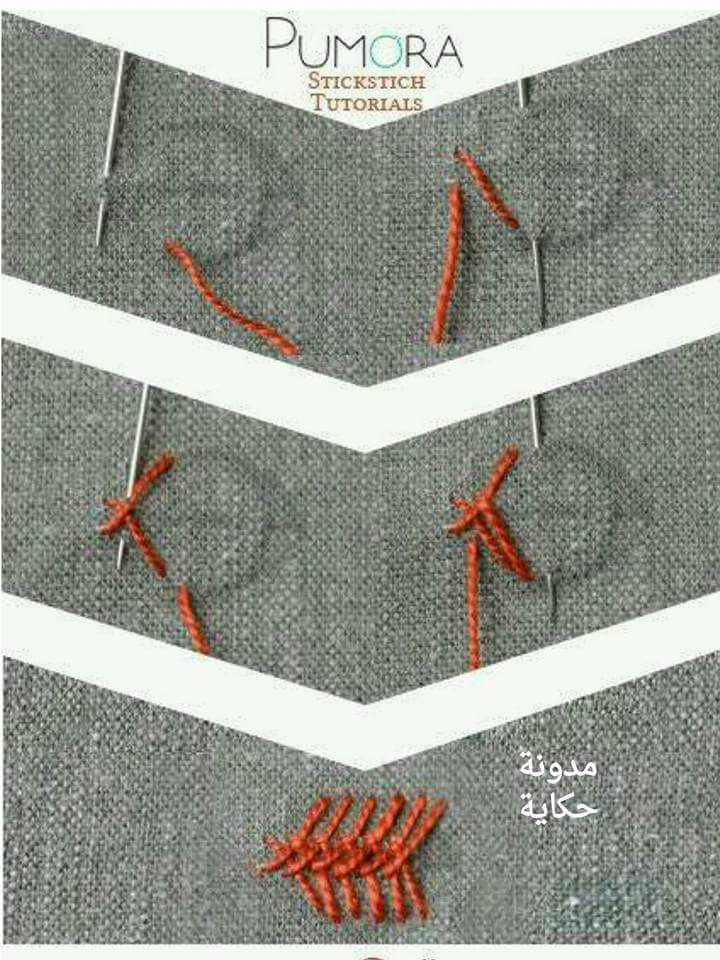
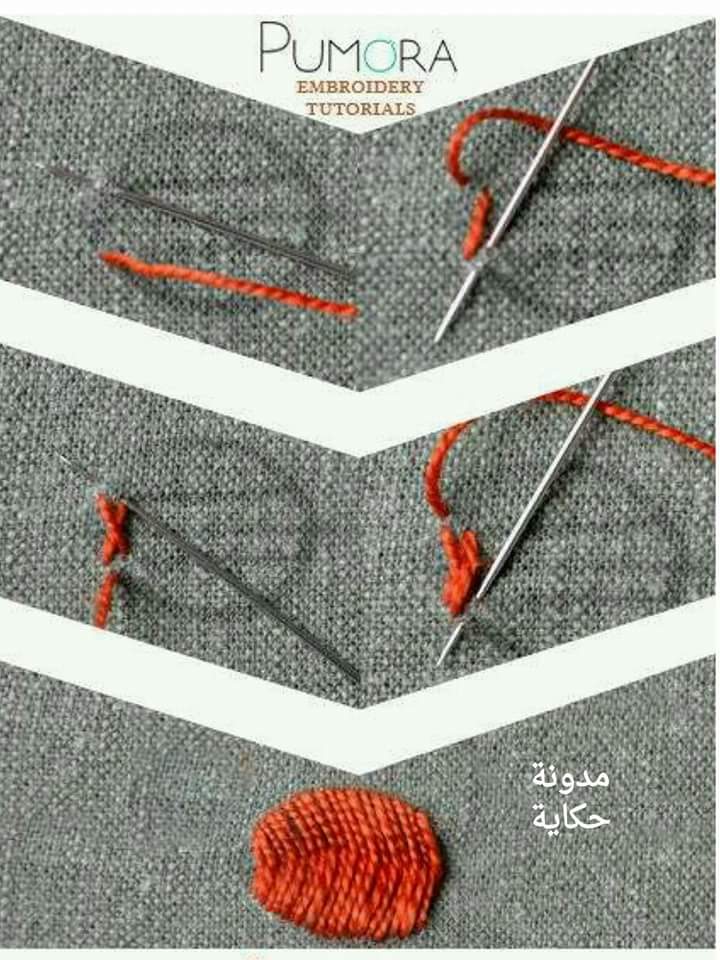

How to make beautiful astry flower jewellery

Required Material:
– plastic yellow and light purple (in my case it Cernit)
– rubber gloves (so our work will be neat and clean as if you do not wash their hands still remain micro dust particles to plastic )
– pasta machine (noodle cutting)
– manicure scissors
– pliers
– the blade or knife stationery (very spicy)
– sponge (or foam)
– toothpicks 3 pcs.
– Super glue
– shvenzy 2 pcs.
– Shtivty 2 pcs.
– The basis for the ring
– oven (not microwave!)
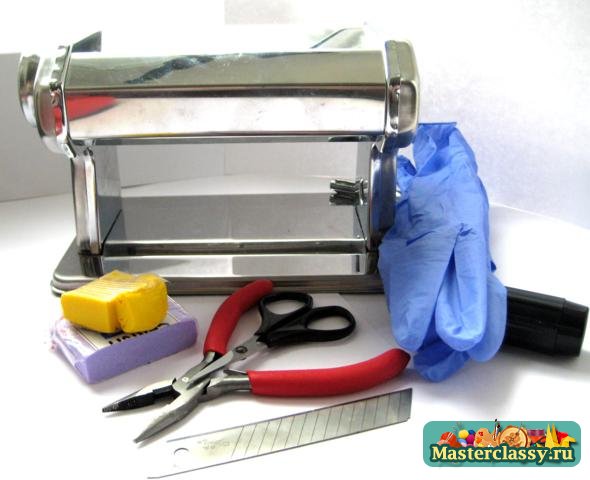

Before we get started it is necessary to take care of the cleanliness of your workplace and be sure to work in rubber gloves.Uncomfortable, but the beauty demands victims.
From yellow plastic, we need to generate the middle of a first rolling ball.

then do the similarity drops

and a toothpick gently makes deep holes 1.5mm – 2mm.
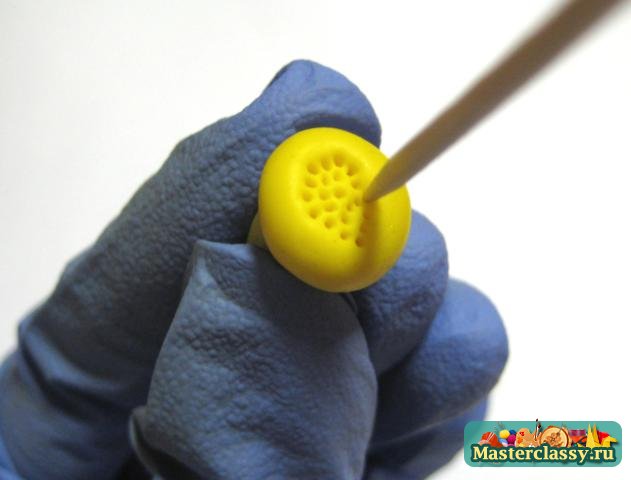
Well, middle, and ready!
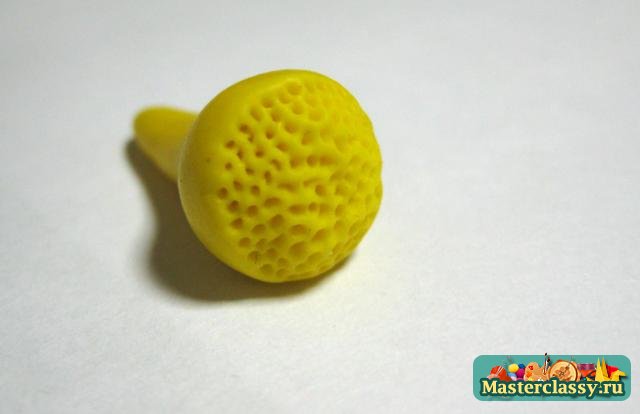
Now thoroughly mash our plastic light lilac color and laminating it on the pasta machine on №7.

This thickness is enough to flower seemed delicate, fragile and yet it was easy to cut strips on the “fringe.”
We had a “pancake”, which should be cut into horizontal strips width of approximately 2 cm (2.5, you can see), and how long will (I have about 10 cm strips +/- centimeter).

Now, on these strips gently, slowly, small scissors cut into the fringe. The thinner strips of fringe, the more beautiful will aster.
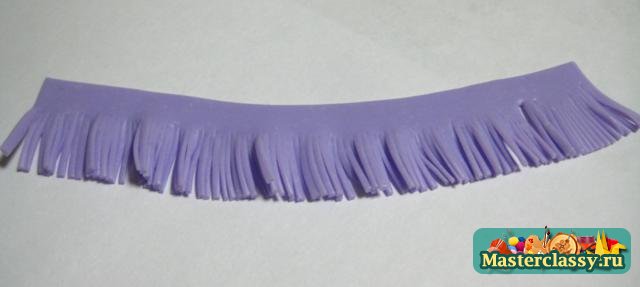
Fringe is ready and we form a flower. Gently seeding are wrapped many times on how you see fit. On this will depend on how much will be your fluffy aster. Each layer is slightly above the previous wrap.
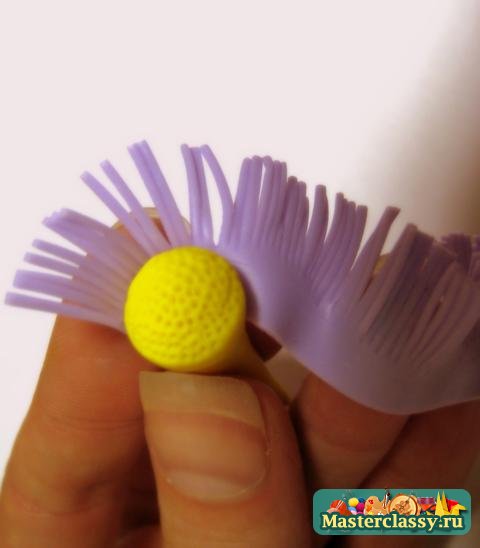
It’s not hard, I think you get if desired.

It is necessary to make three asters, one of them bigger because we will do it ring. Our asters are almost ready, so they do not get crushed, we nanism them on a toothpick and insert into the sponge.
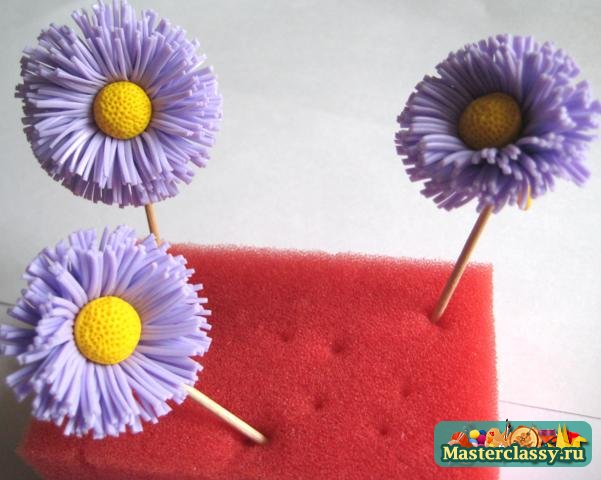
The next step, we send our sponge with flowers in the refrigerator for 10-15 minutes. This is to make it easier with the plastic work.
Our asters cooled down, and we can now insert shtivty in future earrings. At this stage, the pliers will help us. For reliability shtivty grease super glue, so they will definitely be hard to hold on.
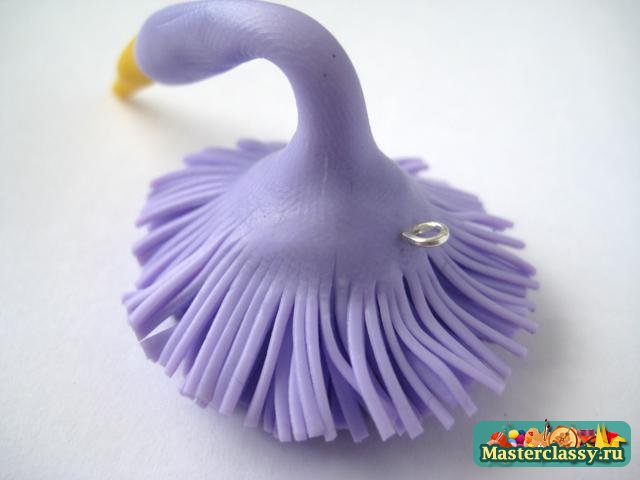
Then a sharp blade, trim the excess. If the blade is not sharp enough, you can strain the product when cutting. Slice smeared all remove irregularities.

Take a basis for the ring grease super glue and glue the flower aster (the one that is a little more). We give him a good dry.
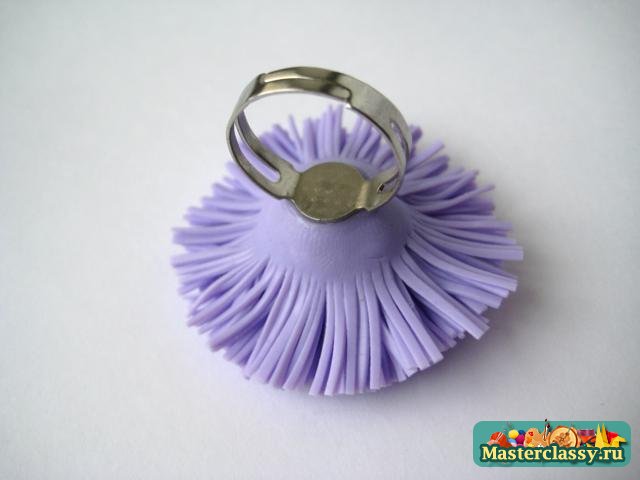
Now roll out a small piece of plastic on a light purple color pasta machine at №8.
Cut a small strip width should be about 1.5 cm length of 3 cm. And applying this piece and gently combine with the flower, cut off the excess on the back side of the base to the ring (on the inside).
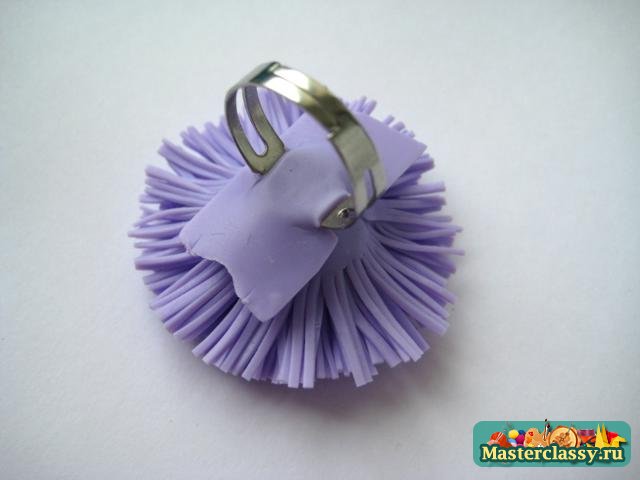
The end result is we should get like this.

Asters are ready to go in the oven.
After correcting any nuances or it will be impossible.
Check if everything is in order and only after convinced send flowers in oven
Bake for our plastic guide that is written on the packaging. In my case, it is 30 minutes at a temperature of 110 C.
Take out of the oven, give cool.
On earrings don shvenzy. Everything is ready, we have consulted. Not so difficult as it seems.
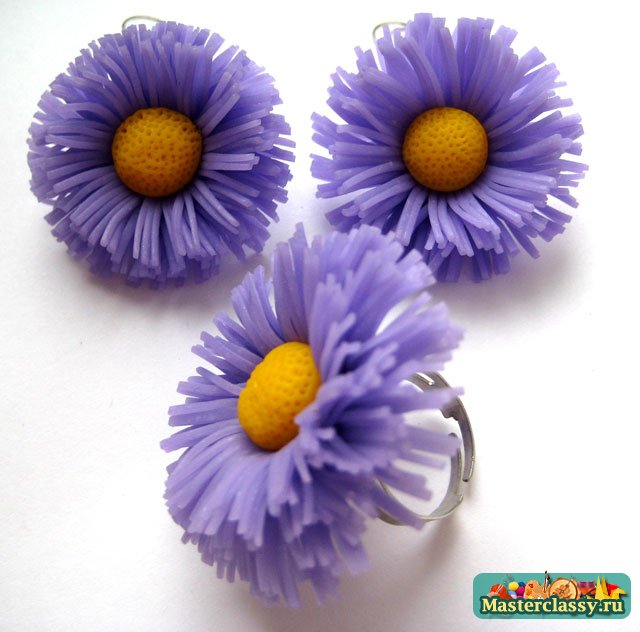
But such a wonderful set can be done only in red!
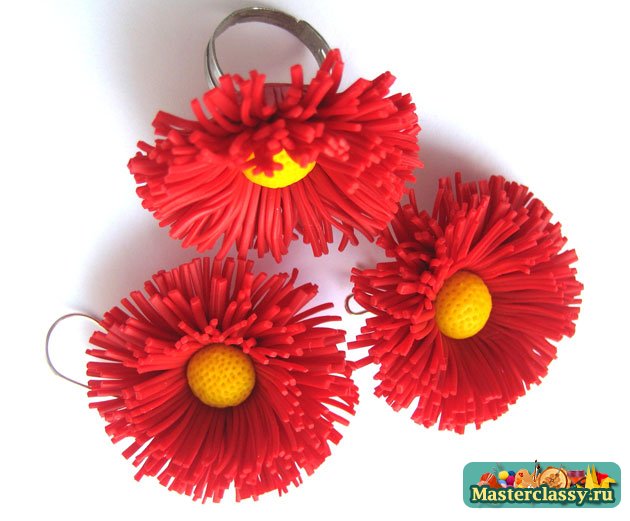
I wish you all success! With respect to you.
How to make beautiful bag on a belt
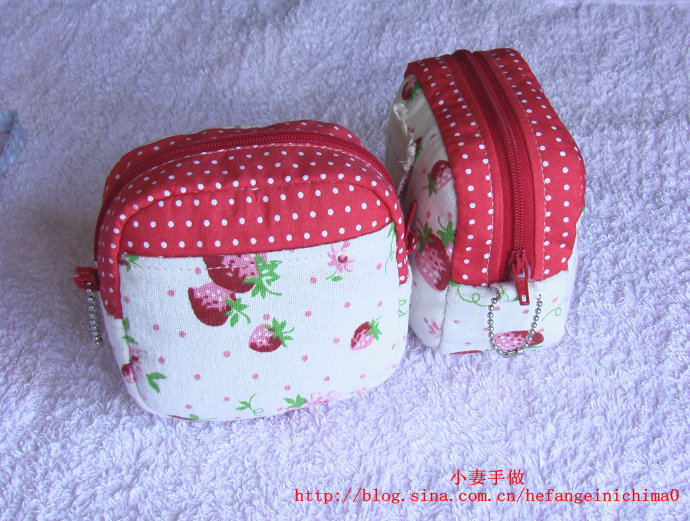

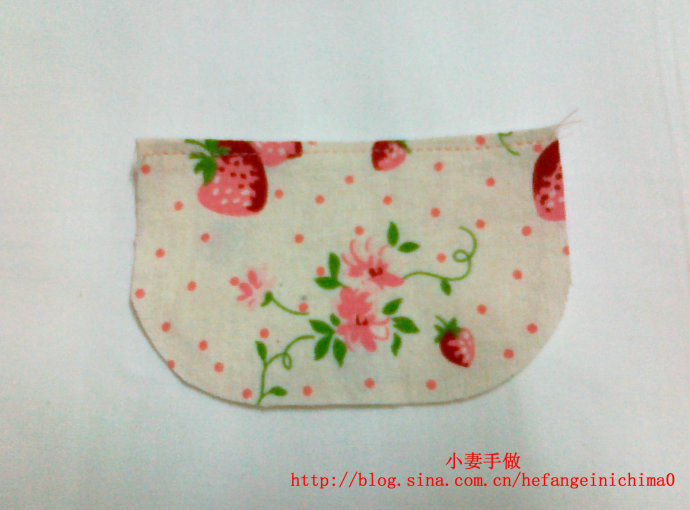
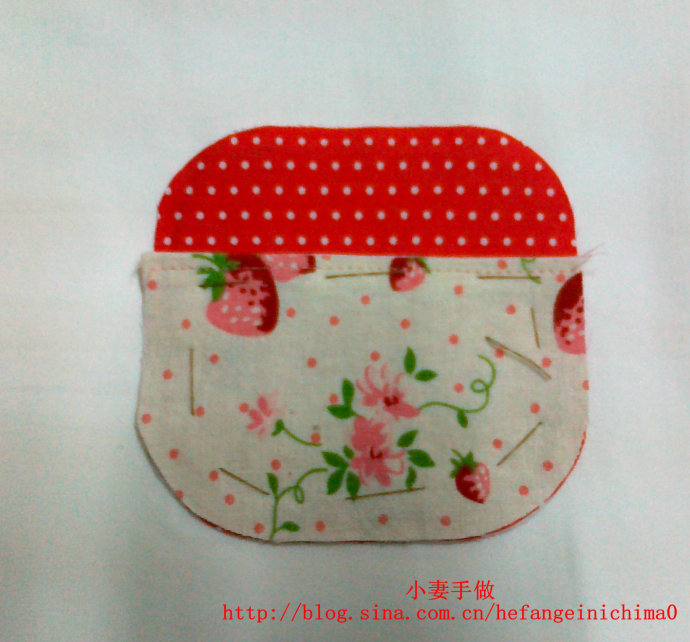
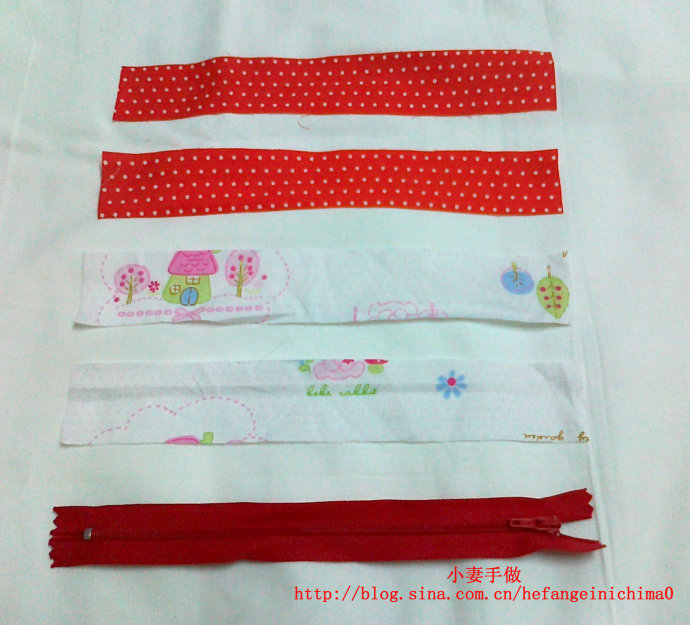



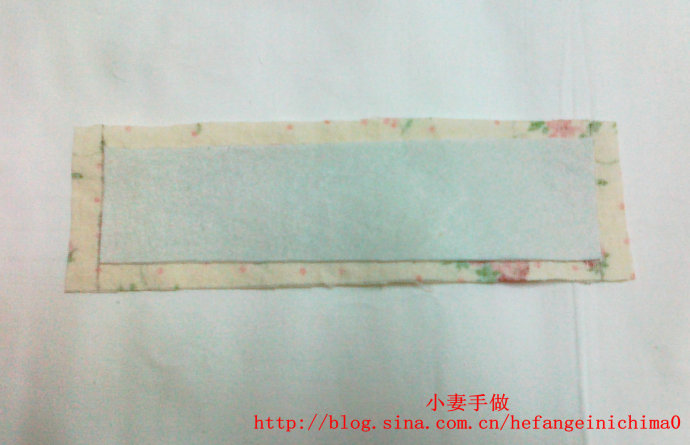
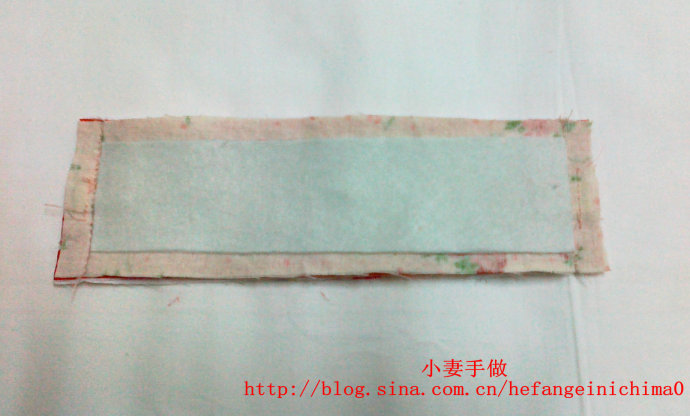
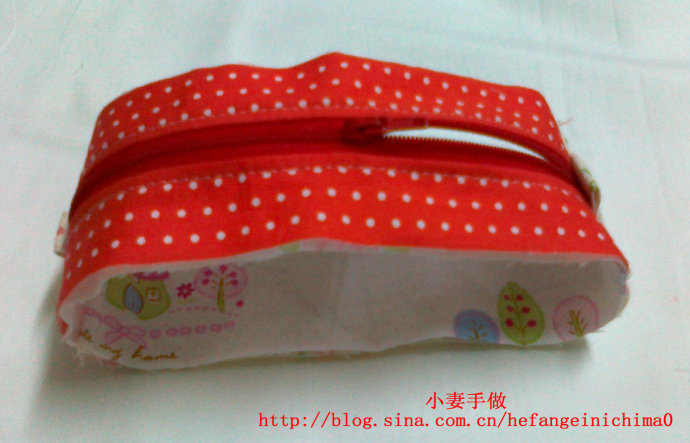
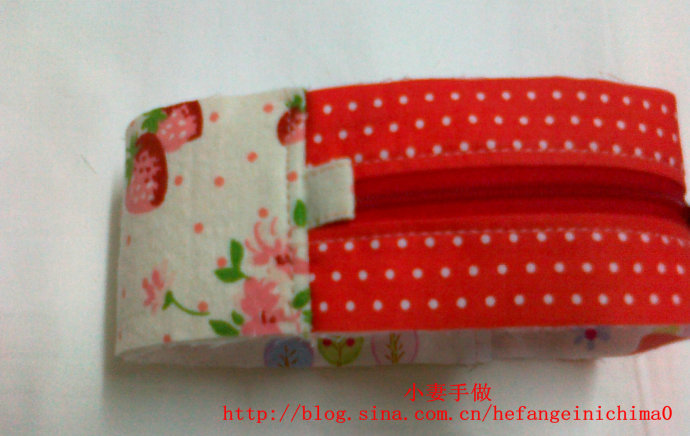
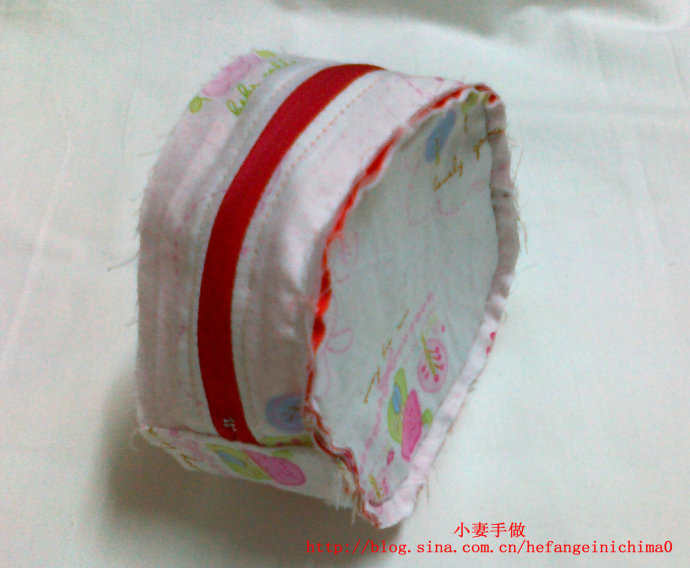
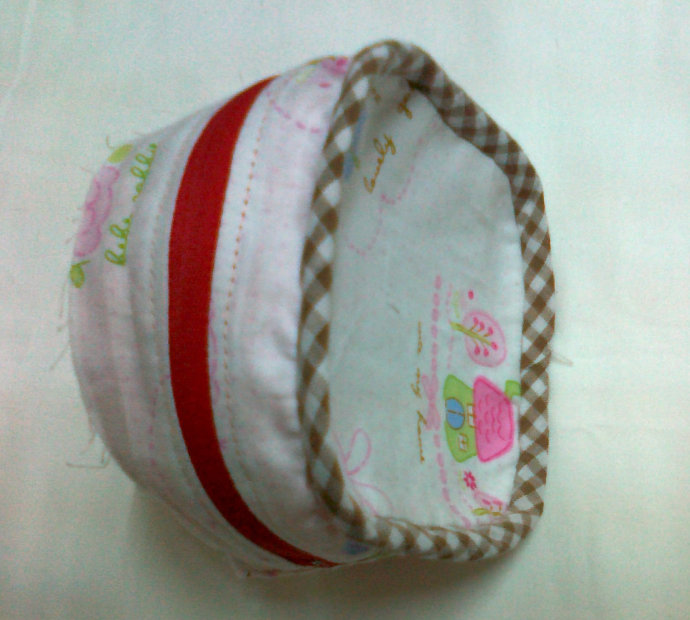
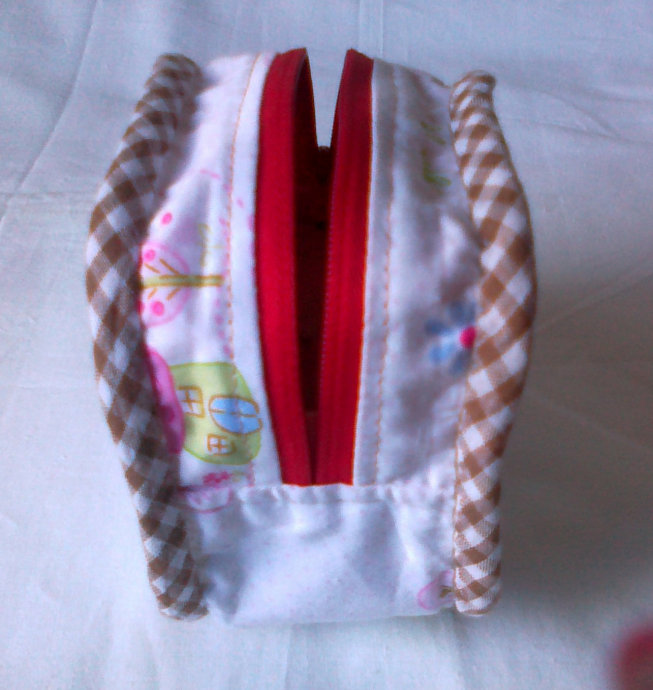
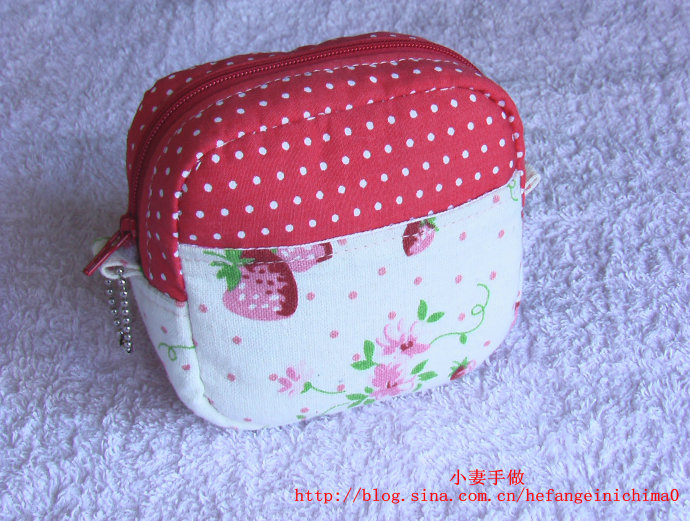
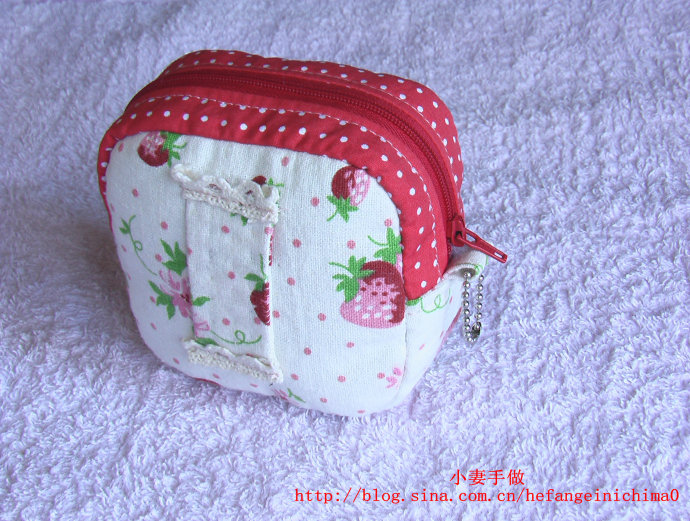
How to sew a simple leggings for kids
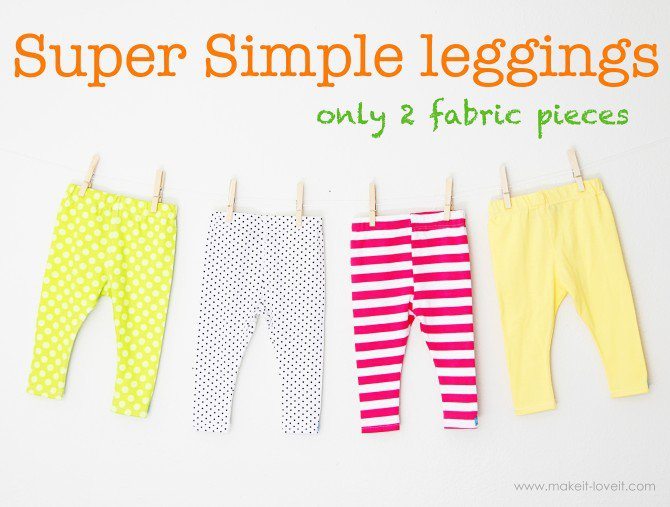
Sew leggings are quite simple. You will need a fabric that stretches well. You can also use old t-shirts or any other things, most importantly, ensure that they are made of stretch fabrics.
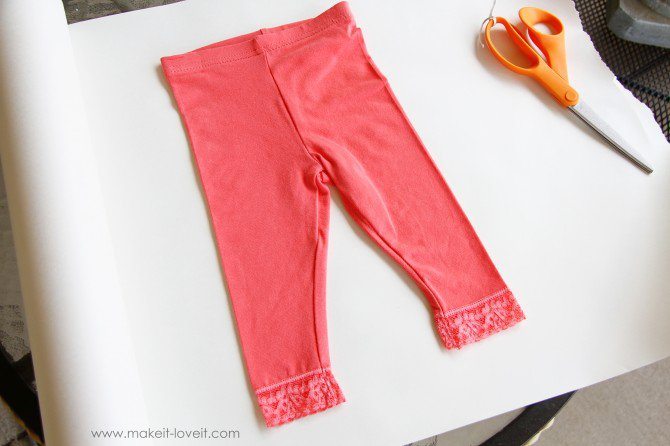

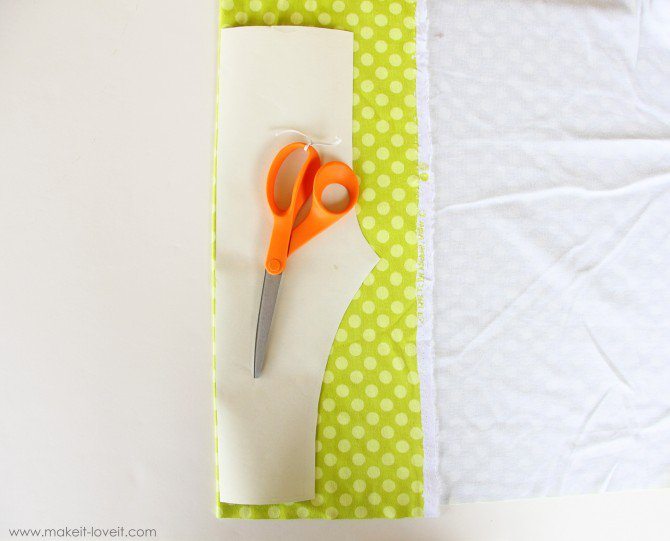
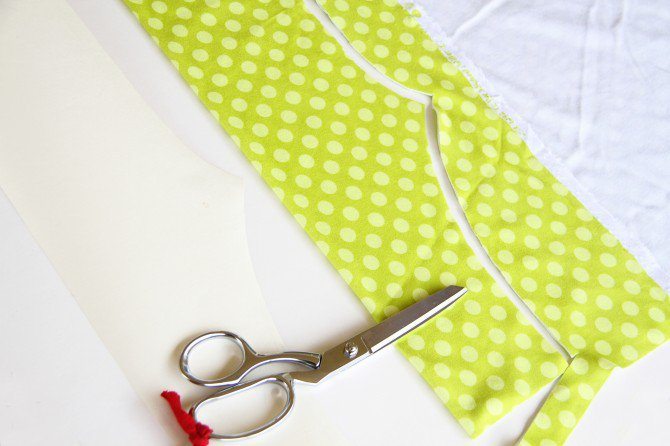
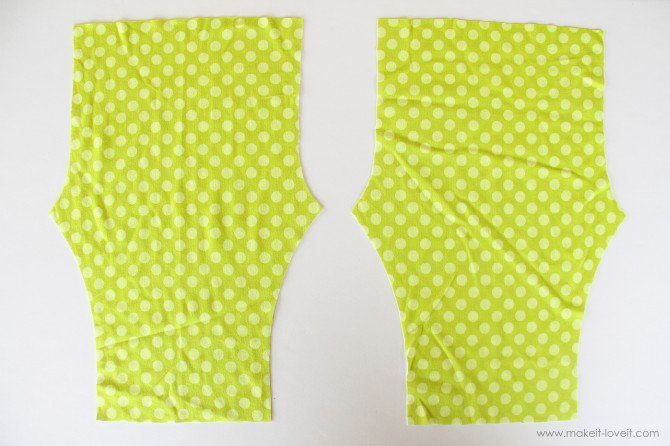


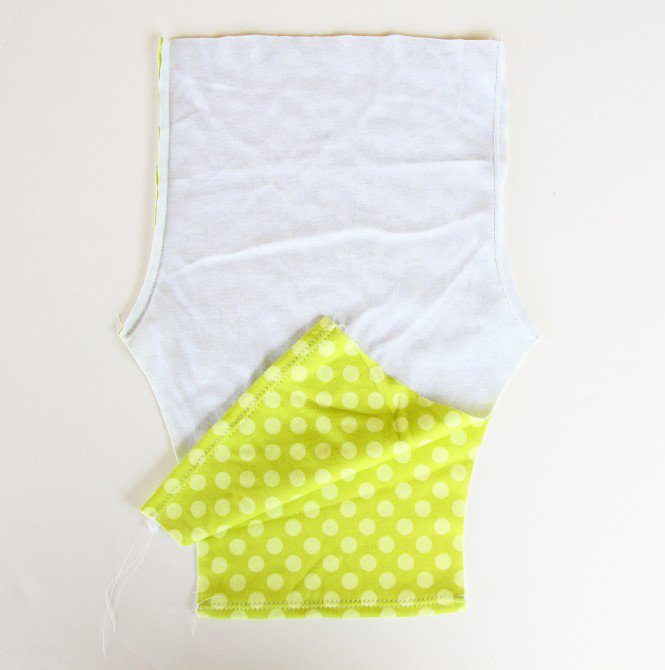
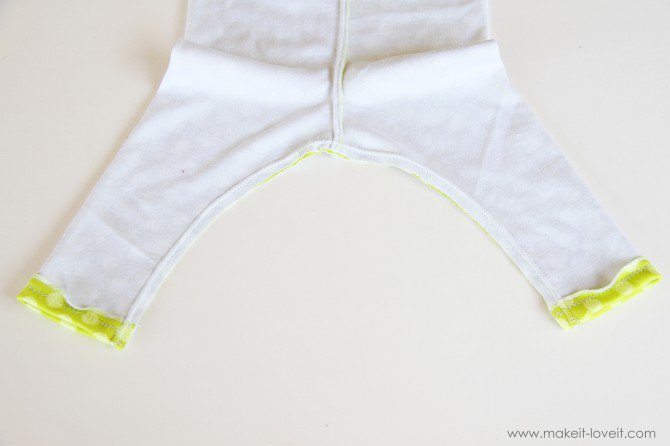


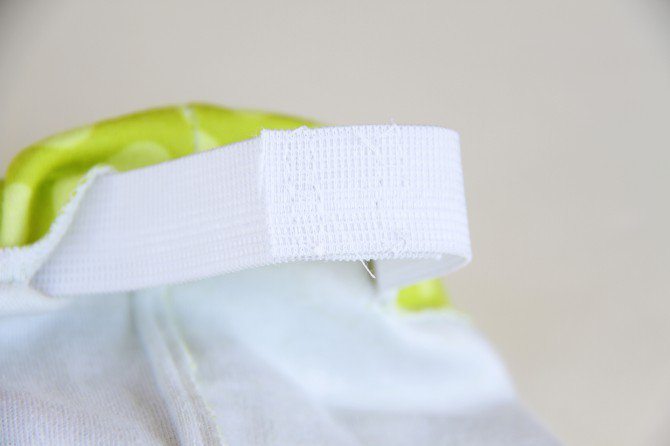
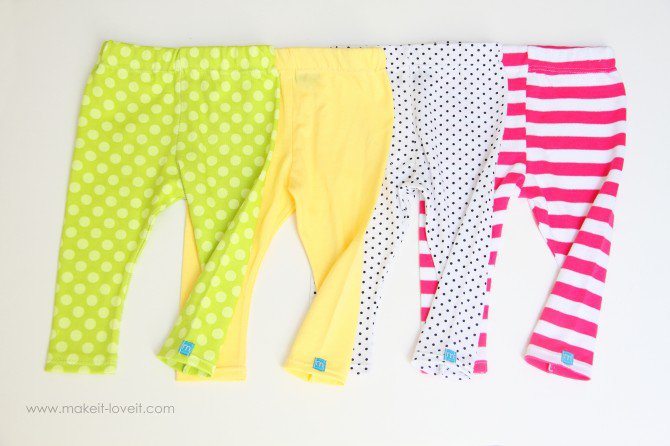
How to sew fairy beauty – Step by step
Fairy beauty – my version keeper cotton discs and sticks. Idea-keepers dolls cotton discs and sticks is not new, but I’ll show you my version of this beautiful and necessary pupa. My keeper almost everything is different from the traditional tilde, from it there was only myself storage idea. If you want to get yourself or as a gift is not only beautiful, but also practical doll, my master class can be helpful. Let’s get started!
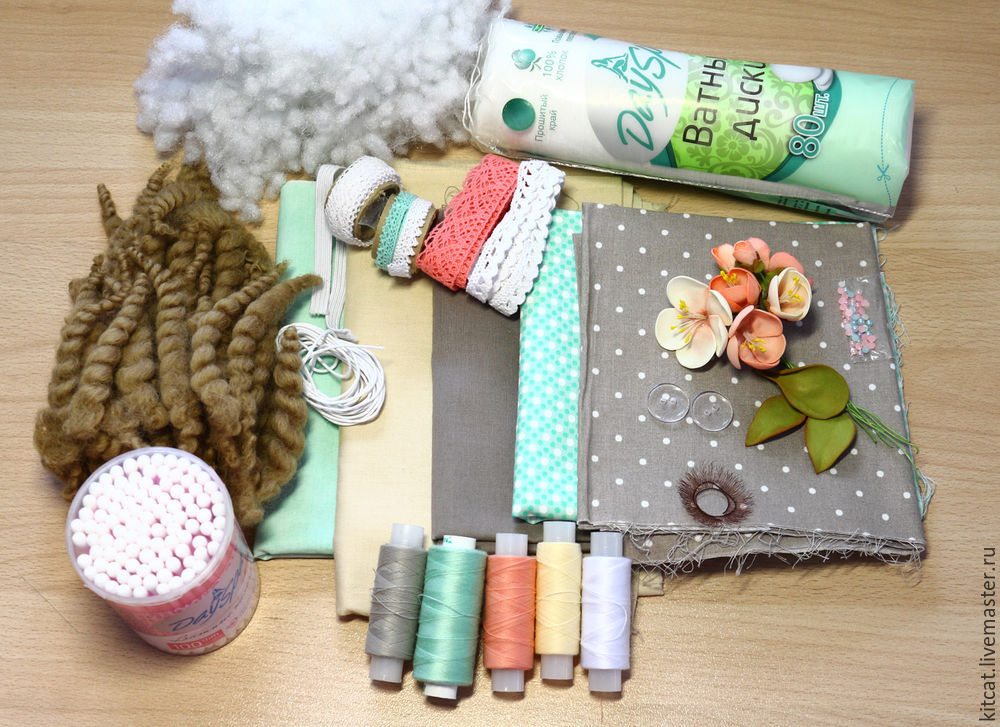
Required Materials:
-
Cotton fabric for the body and dress dolls. I prefer natural fabrics from America, Germany, Korea, Japan. For this pupa I took German and American tissue mint and gray colors.
-
Sewing thread to match the fabric. For the body and head dolls, it is desirable to use a strong thread to avoid tearing during stuffing. I like reinforced, 45 pp.
-
Filler for the doll. This can be sintepuh, hollofayber. I use hollofayber.
-
Cotton lace to decorate the doll dress.
-
Waxed cord or other strong cord to create attachment.
-
Elastic underwear width of 0.5 cm to the removable skirt.
-
Wool Felting – for doll hair.
-
Two buttons for hanging cotton discs.
-
Packing cotton discs. I am using in their pupae packing on 80 disks, they are well suited to my height fairies.
-
Jar with cotton buds. I chose a jar of 100 sticks, it is small and does not look bulky in small puppet handles.
-
Artificial lashes for dolls.
-
Materials for decoration jars with cotton buds. It all depends on your imagination. Shells, marine items, decorations of plastic, foamirana, wood, fabric, lace and so on – the list is endless. For the pupa of the master class, I took a few flowers and leaves of the apple foamirana.
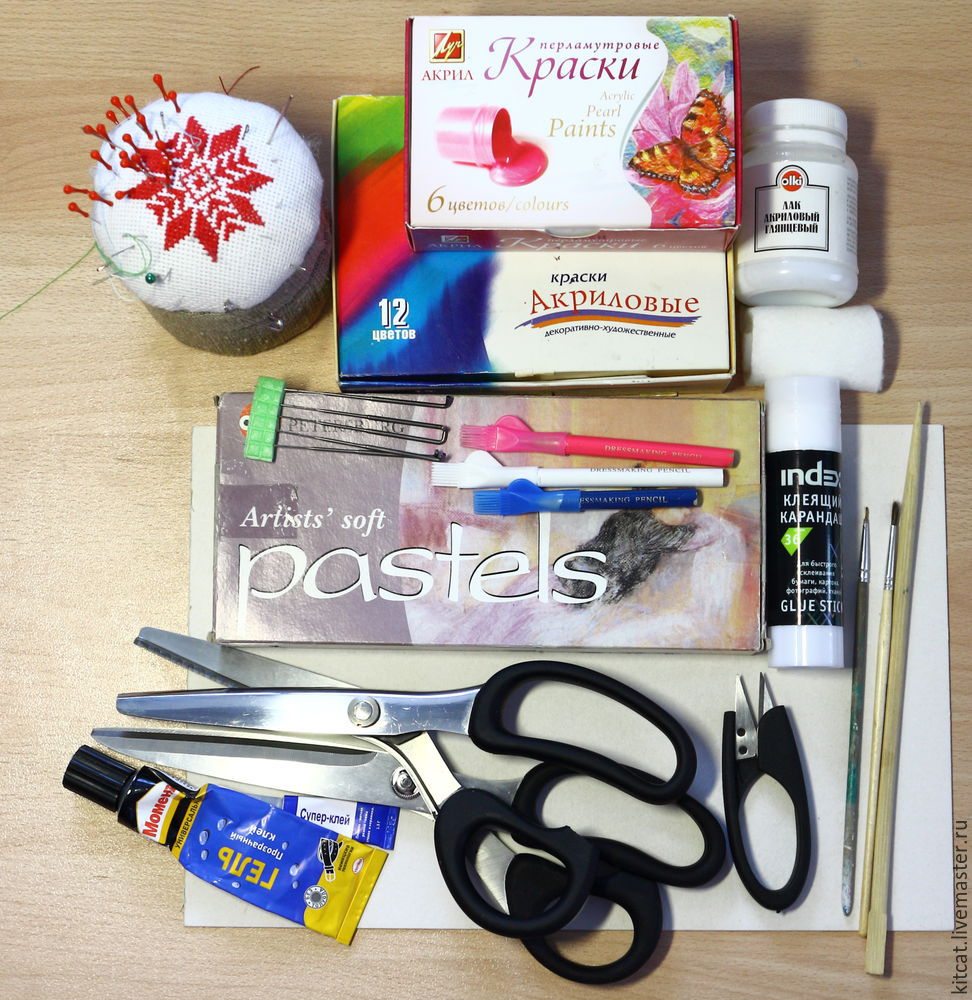
Tools and supplies:
-
Sewing machine. With a strong desire, you can do without it, but the machine greatly facilitates the process.
-
Needles, pins conventional and English
-
Scissors: Manicure, fabric and pinking (zig-zag) if there is. Also for cutting threads convenient to use scissors-snippery
-
Needle Felting.
-
Acrylic paints.
-
Acrylic lacquer.
-
Brushes: thin – for painting the face and thicker – for varnishing.
-
Dry pastel – for toning the face doll.
-
Tools for packing. I use a stick to sushi.
-
Glue: Transparent versatile, super-glue, fabric, PVA glue.
-
A piece of cardboard or plastic bottoms.
-
A small piece of soft lint-free cloth. I have a fleece.
-
Washed off or Disappearing marker for tissue or tailor’s pencil – for transferring the pattern onto the fabric. I use a pencil, because it leaves a thin line.
-
Thin double sided tape.
-
Simple pencil.
-
Pattern. For each pupa I am a little changing the pattern, so working patterns I have a few. Here’s a variation of one of them:
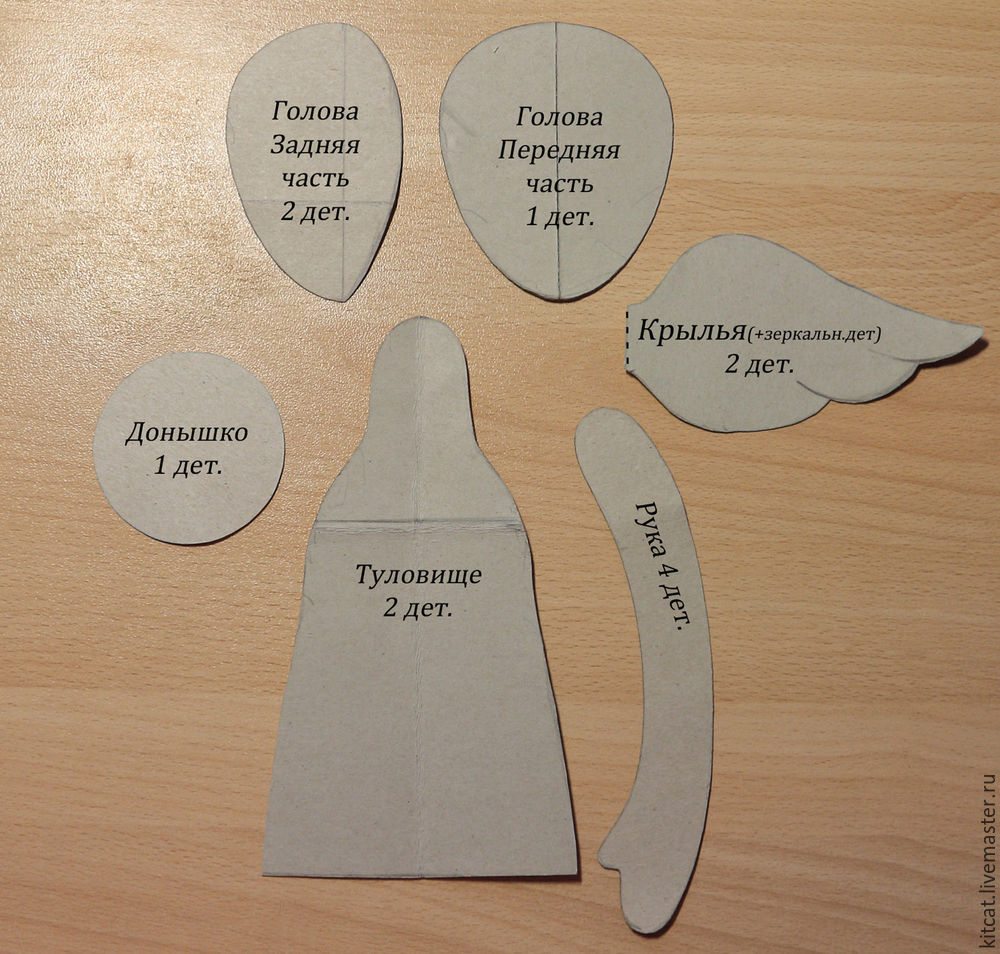

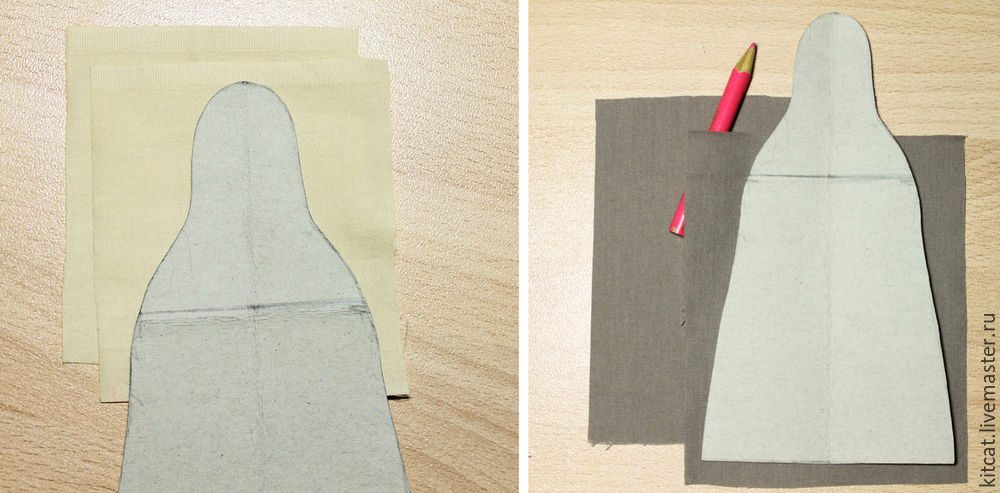
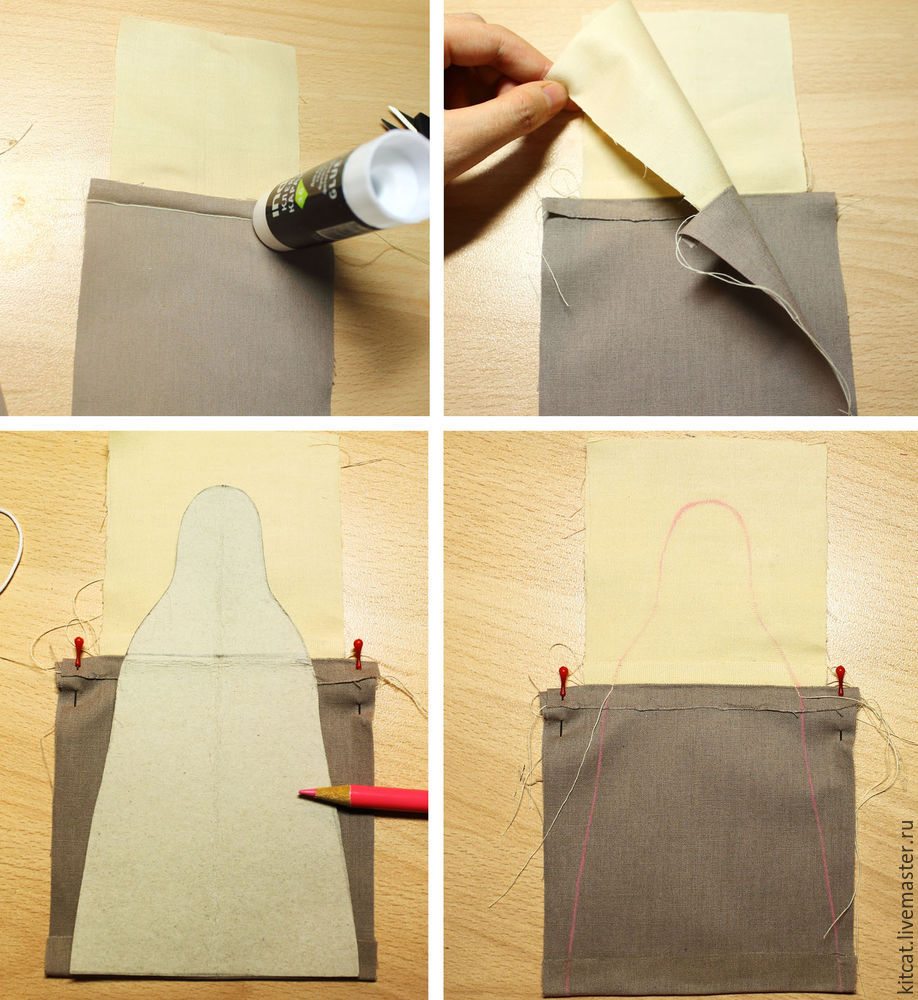
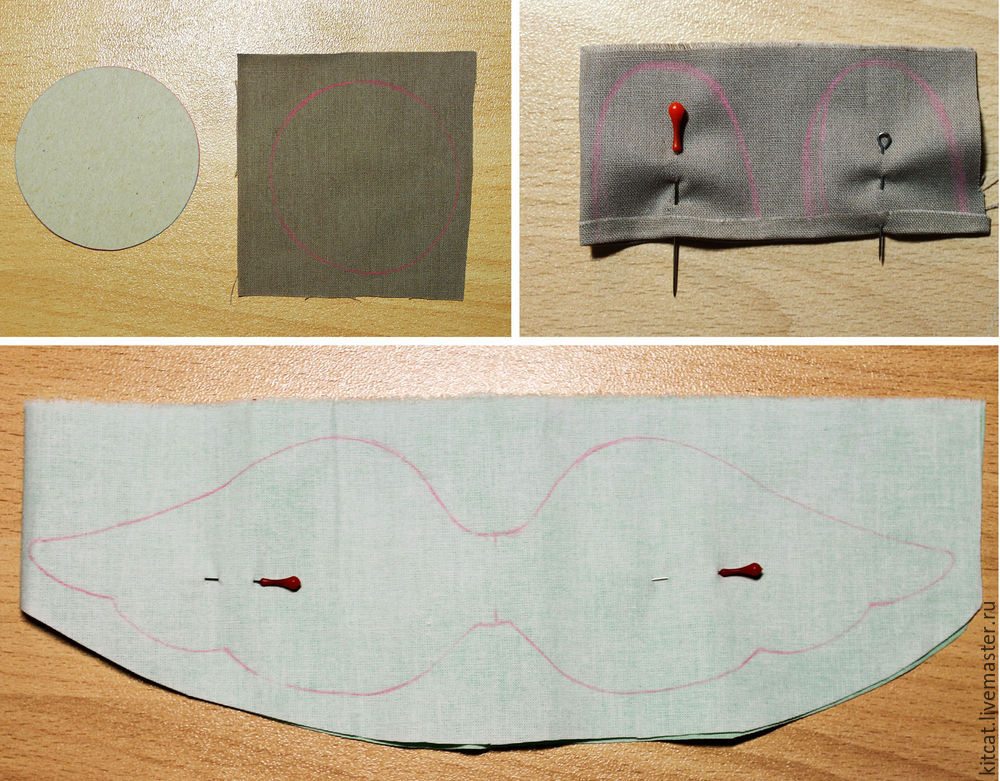
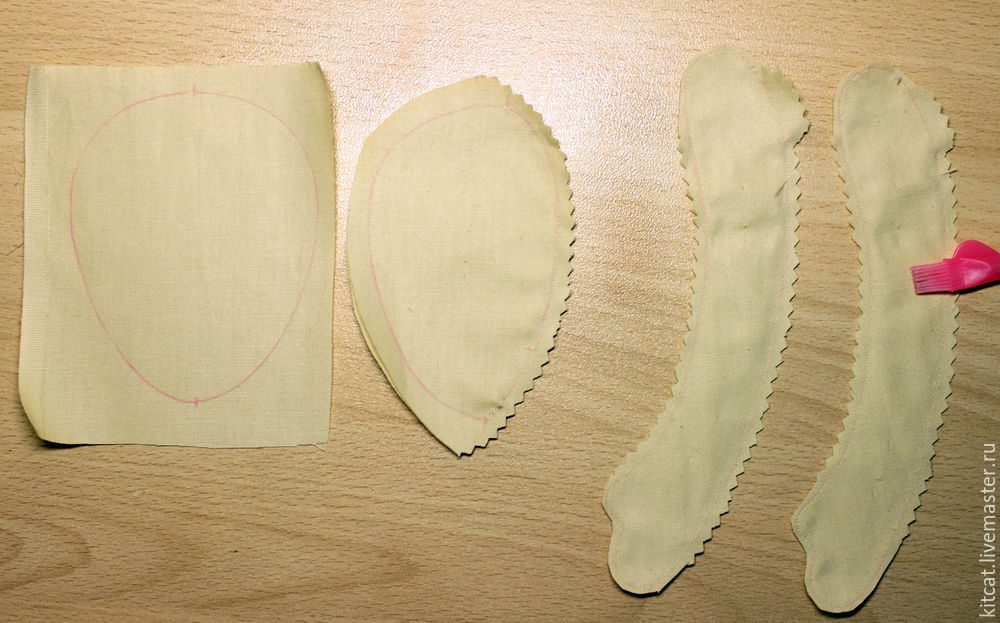
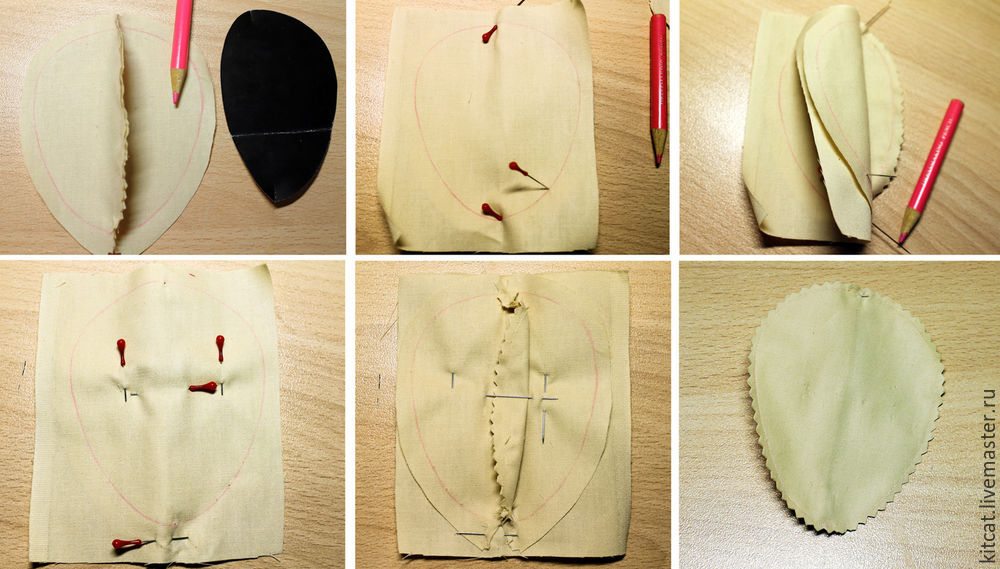
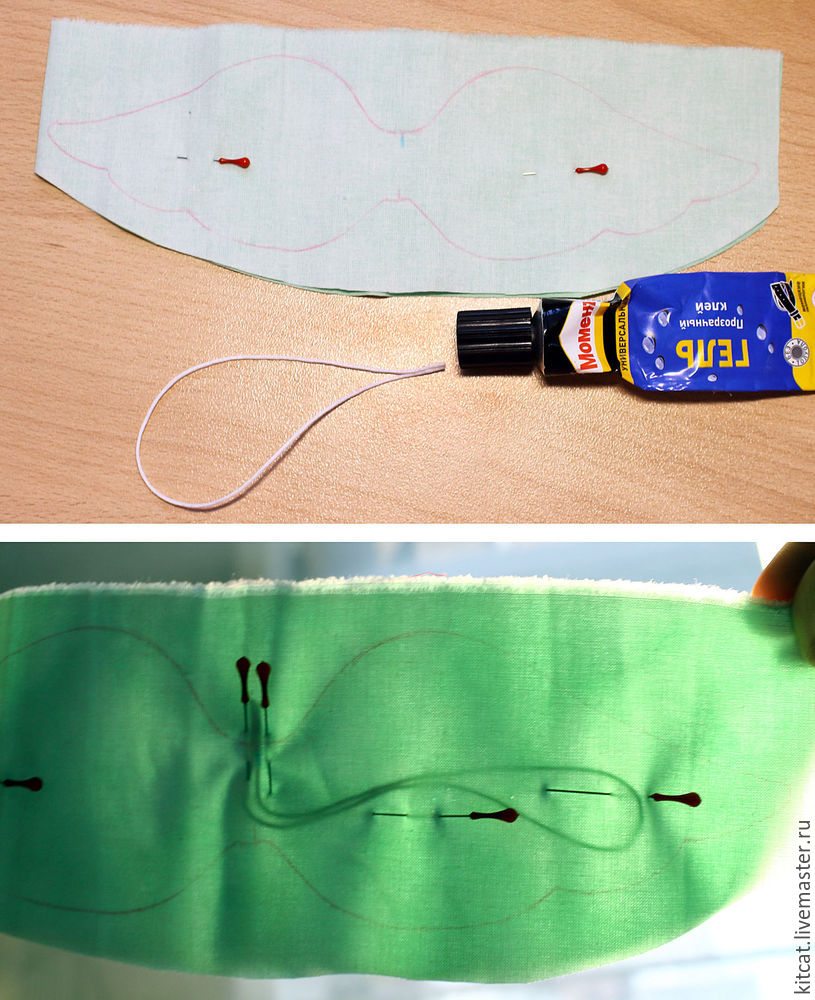
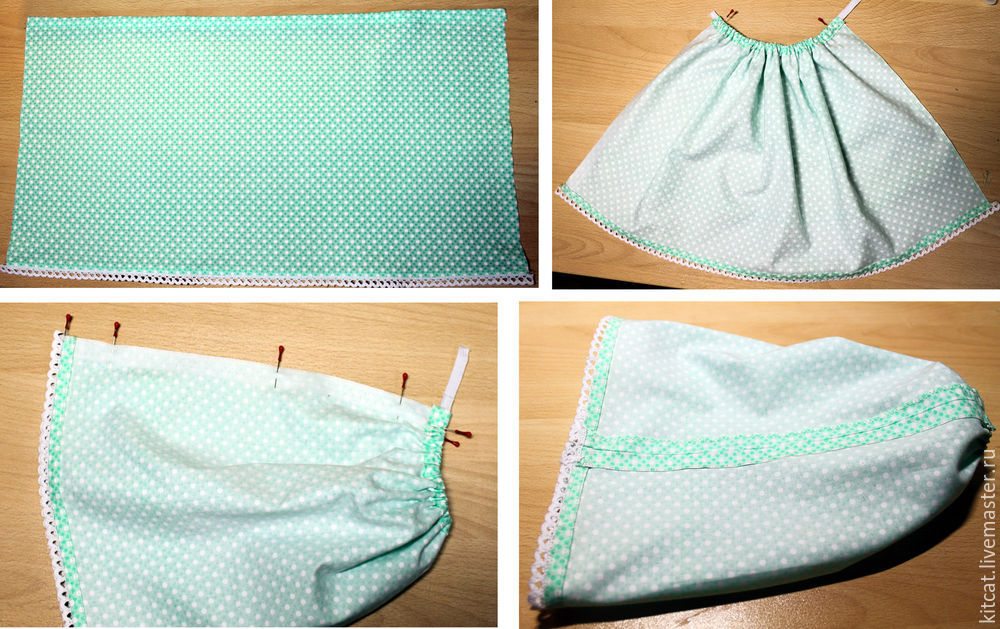
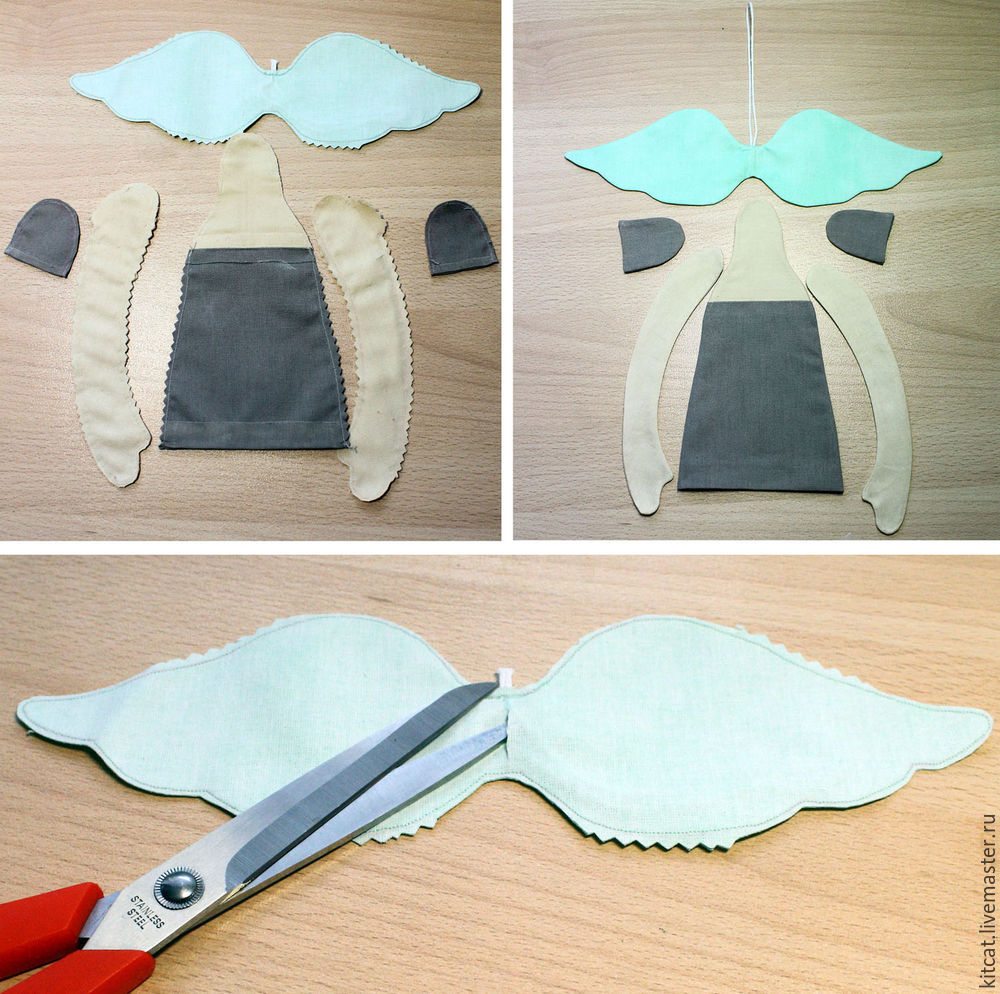
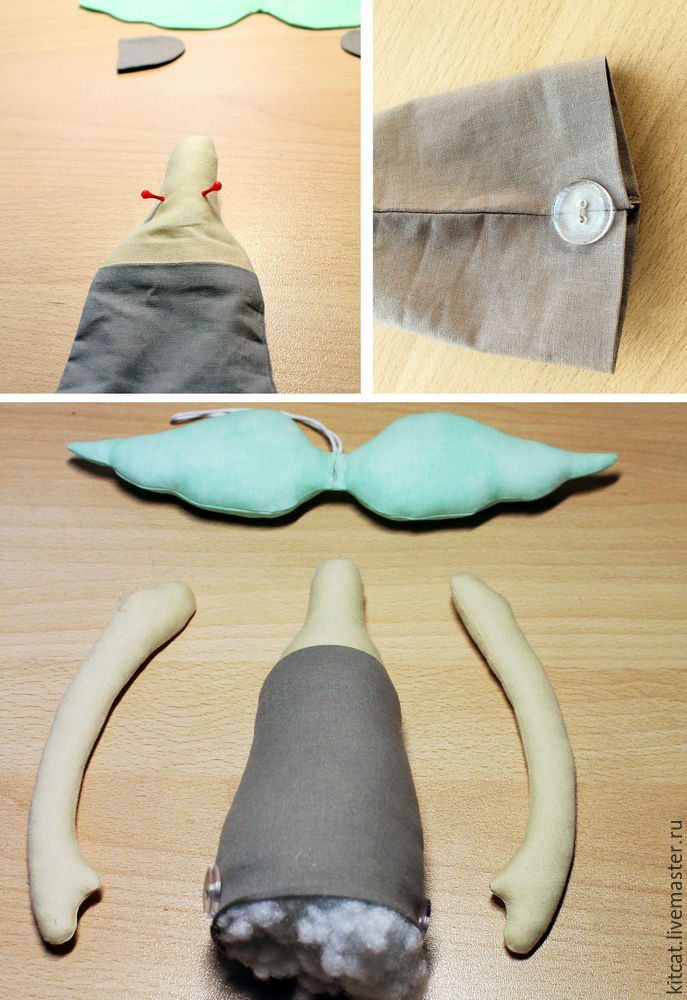
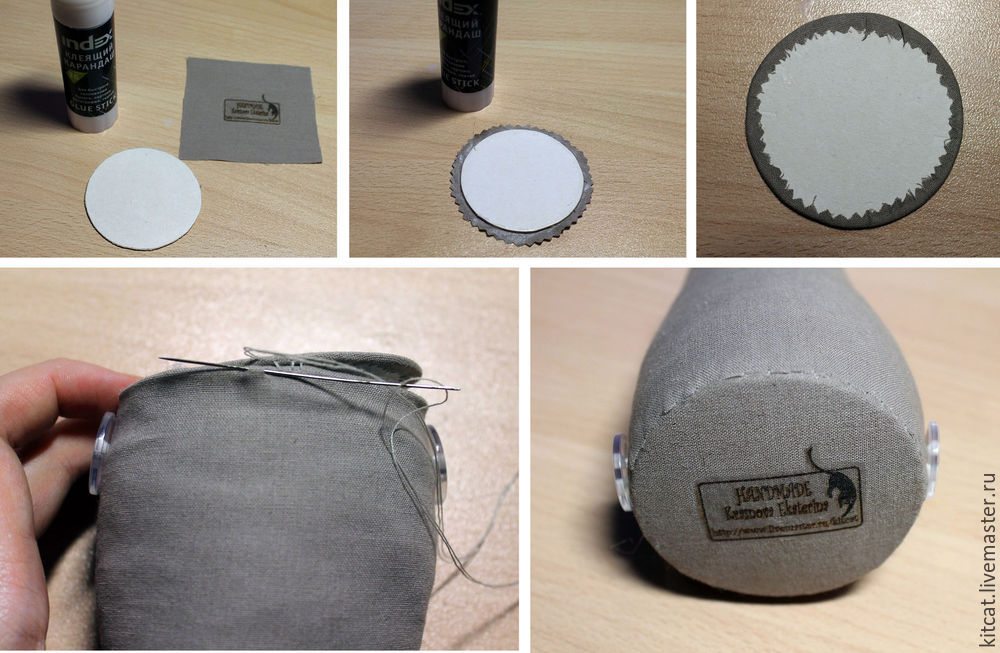
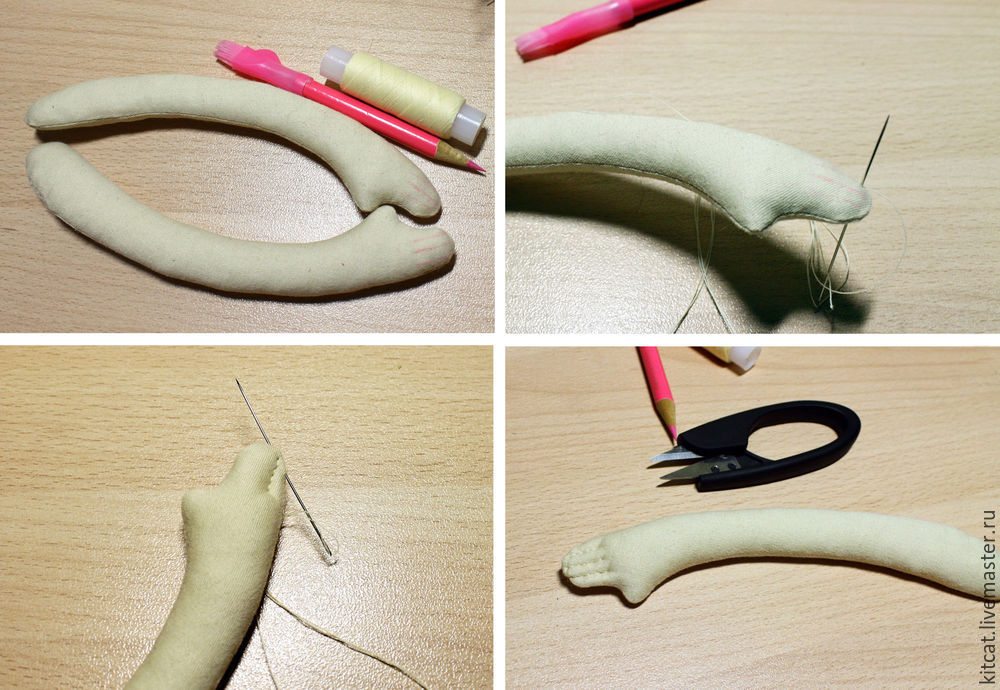
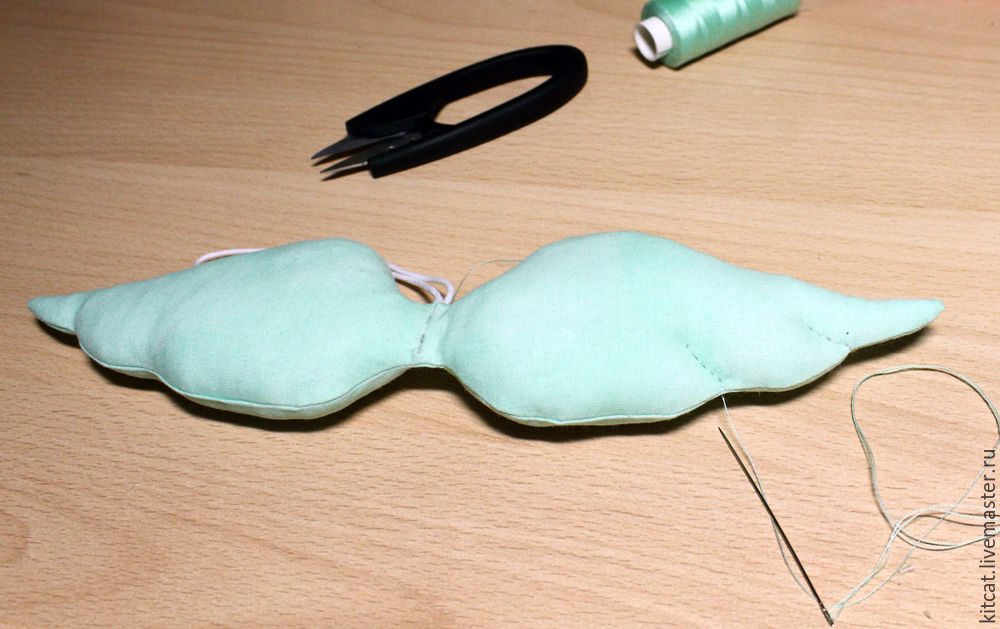



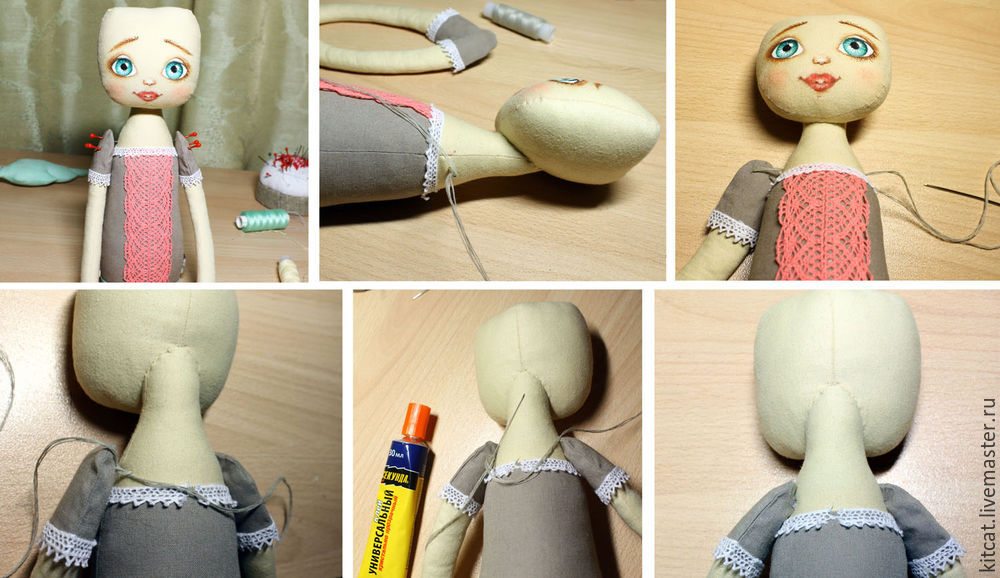



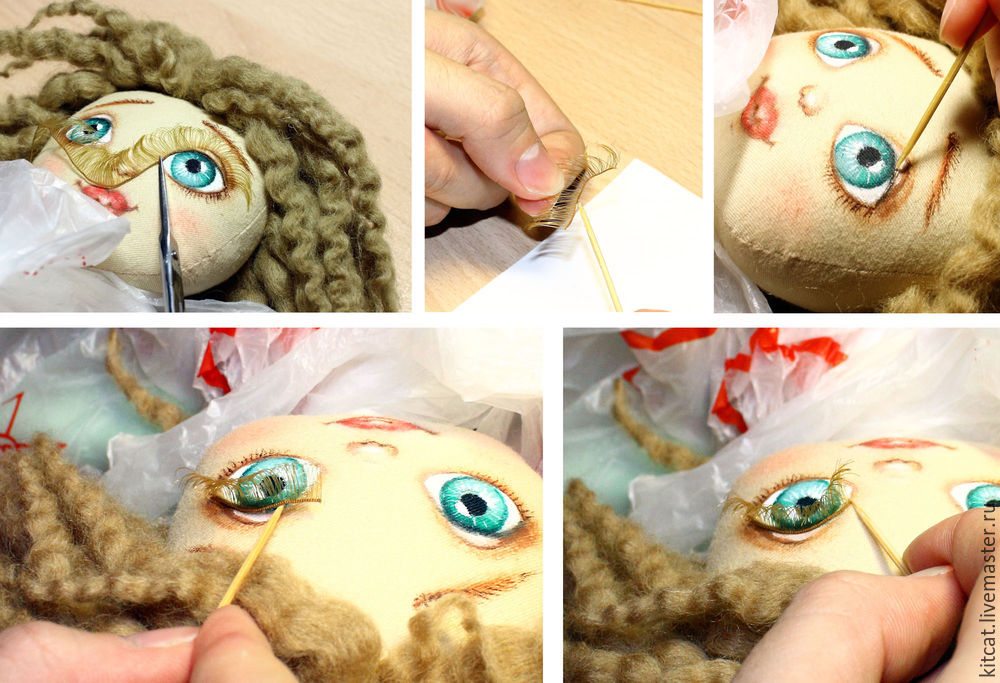



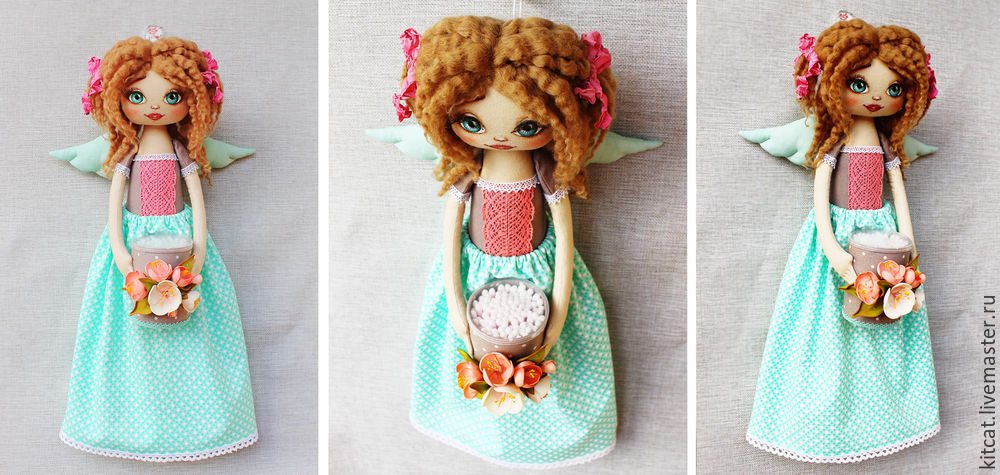
How to make ring sphere “Paris” of the epoxy resin – Step by Step

we need:
Epoxy resin (Resin Crystal) Silicone Mold, the basis for the ring, the metal figure of the Eiffel Tower, pliers, wire cutters, glue, epoxy, matches, jewelry wire, sequins or microbeads, breadboard knife, a plastic cup and a wooden stick.
Epoxy mix in the proportions 2: 1, 1 ml and 2 ml hardener resin

mix thoroughly

We pour resin into a special silicone Mold covering approximately 1/3 of the total Mold resin and give leave all if it does not, you can put the MDL with the resin in a container of hot water

take further action figure of the Eiffel Tower and bite off the ear with pliers, wire cutters, if it did not work very smoothly, you can trim the metal nail file

then take the match and cut off their head sulfuric Prototyping knife, so as to obtain three flat, small cubes


then do the design for securing the tower of matches and wire

anchoring wire
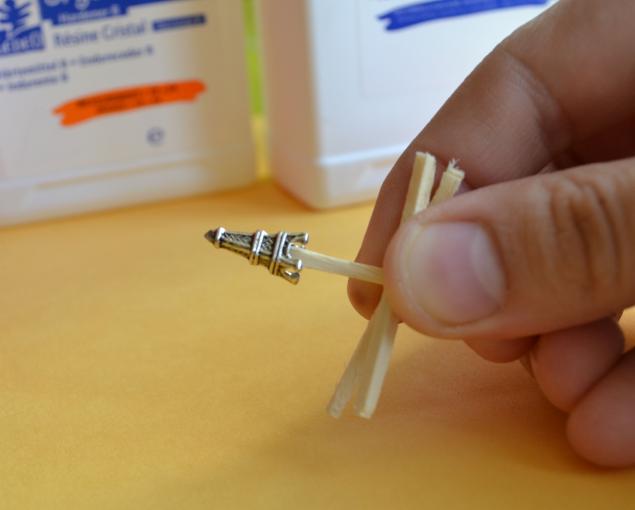
and immersed into the resin, so that legs of the tower structure and it does not come into contact
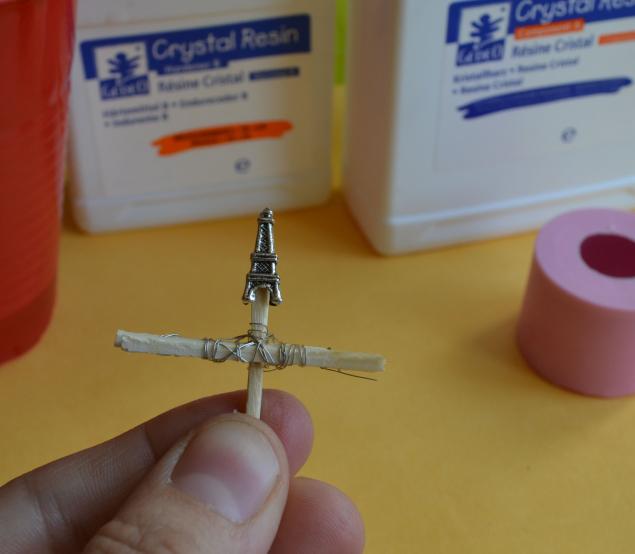
leave to dry for 24 hours

after this time, we take out the design and our tower remains fixed in the resin

Now to refill the resin, so that it almost covered the legs, this point is very important, because if you pour the resin, your tower will remain hanging in the air, and if you do not top up, then you will not see her legs, you need to be very careful at this stage, because Mold matted and filled up turret trio predict the result of the feet.

after you have filled in the resin again, we leave it to dry for 24 hours, and do not forget to cover the MDL cap to the resin did not get small lint and dust

After 24 Sasa pour in MDL sequins, artificial snow or microbeads, so you can pour white baked plastic rubbed on the Needle or fine saw, but the process is quite time-consuming, this advice find artificial snow if you are not a fan of sequins, I used pearl white tinsel
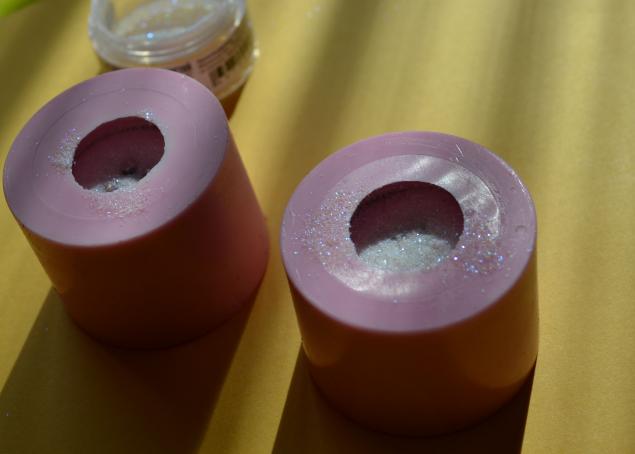
Now fill it with epoxy resin to the top and leave to dry for 24 hours
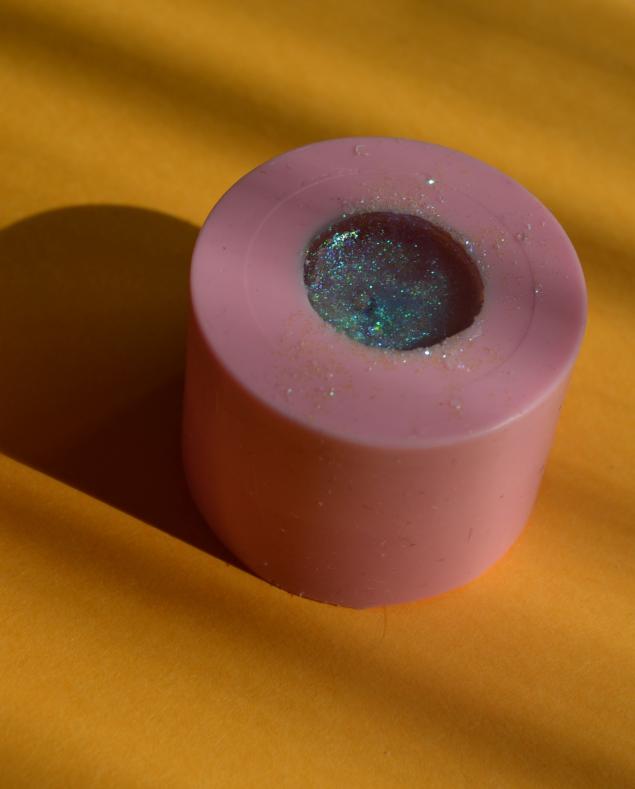
As time passes, we take out our balls mold. what we’ve got

then take the epoxy adhesive and glue bead to the base, the base can be any brand, it depends on your imagination, in this case, I used 2 silver and bases of round oval. you do not have an epoxy adhesive can be stuck on the same pitch, just a little wait until it thickens to not let stains
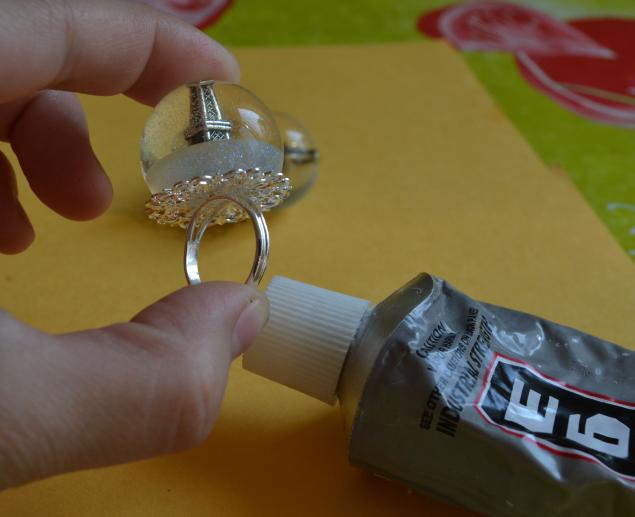
leave to dry for 24 hours.
Our ring ready

I hope the workshop seemed to you accessible and interesting and useful to you in the future
Beautiful Handmade Dress for girls
Beautiful dress for girls
Children’s fashion did not lag behind the adult, and the proof of this – many magazines, making children’s clothes. Many moms start to sew in the decree, both want to dress their child cheap, and thus – original. If you – one of those moms, you will enjoy a class on how to make a dress for girls tulip. It is very simple and looks unbanal!
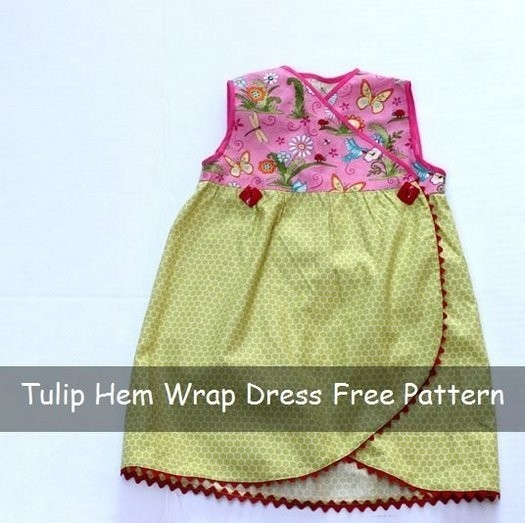 For the manufacture of children’s dresses you need: two cutting cotton in different colors, red wavy rim, two decorative buttons (bigger and brighter than the standard), thread, scissors, pins and sewing machine.
For the manufacture of children’s dresses you need: two cutting cotton in different colors, red wavy rim, two decorative buttons (bigger and brighter than the standard), thread, scissors, pins and sewing machine.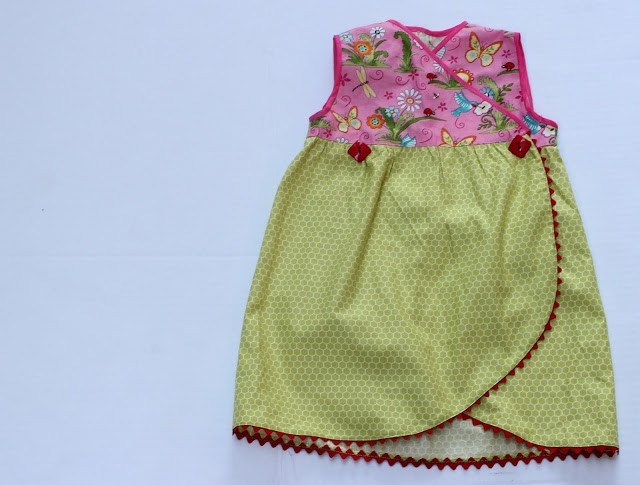 Everything starts with the bottom of the dress – the skirt. Carve out a rectangle of fabric long enough to skirt was not your babe in tight. In length, too, decide for yourself: ideally, the dress should be at the knee or slightly nizhe.Slozhite rectangle for the skirt half.
Everything starts with the bottom of the dress – the skirt. Carve out a rectangle of fabric long enough to skirt was not your babe in tight. In length, too, decide for yourself: ideally, the dress should be at the knee or slightly nizhe.Slozhite rectangle for the skirt half.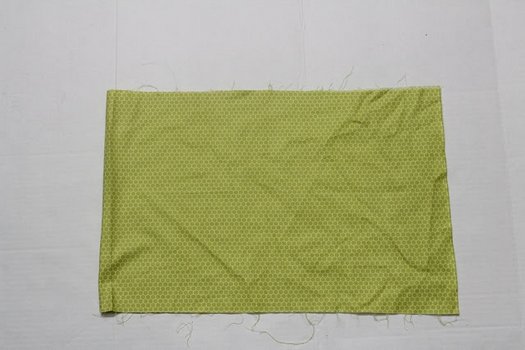 Cut angle in two layers of dress: make it rounded. Even here you can see the details of the future tulip: rounded corners and it will flower petals.
Cut angle in two layers of dress: make it rounded. Even here you can see the details of the future tulip: rounded corners and it will flower petals. The bottom and side edges of the skirt next bend double to wrong side and Stitch.
The bottom and side edges of the skirt next bend double to wrong side and Stitch.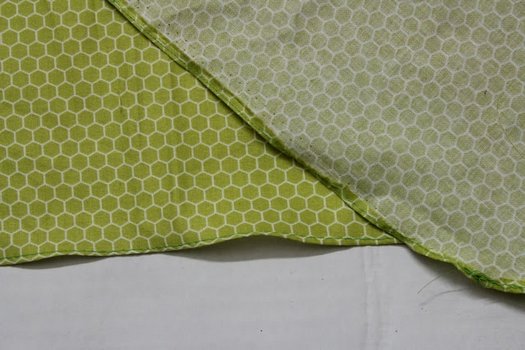 Also sew on all sides except the top-line skirts, wavy fringe. You can also use the lace or ruffles.
Also sew on all sides except the top-line skirts, wavy fringe. You can also use the lace or ruffles.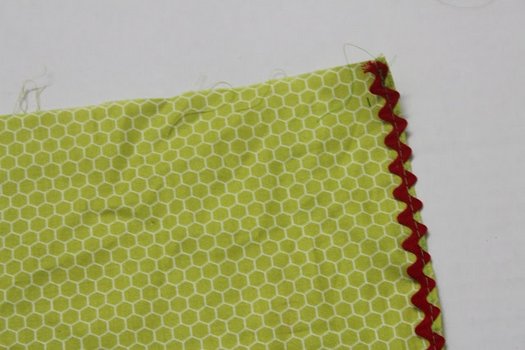 You can sew the hem so that on the front side only the side of the teeth.
You can sew the hem so that on the front side only the side of the teeth. Now you need is gathered top line skirts or gum paste into it. How to insert a rubber band, you probably can guess, but is gathered – a little more complicated. Dvadly necessary to bend the upper edge and stitch it, and then strung on a thread and pull it. Try to pull off so that the skirt then covered another little princess!
Now you need is gathered top line skirts or gum paste into it. How to insert a rubber band, you probably can guess, but is gathered – a little more complicated. Dvadly necessary to bend the upper edge and stitch it, and then strung on a thread and pull it. Try to pull off so that the skirt then covered another little princess!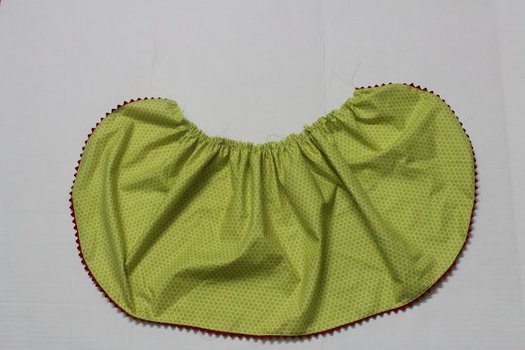 Cutting parts for the upper part of the dress. Pattern is the easiest, because children’s clothes do not need recesses. To carve out a piece for the back and two (in mirror image, with an oblique smell) – for products forehand.
Cutting parts for the upper part of the dress. Pattern is the easiest, because children’s clothes do not need recesses. To carve out a piece for the back and two (in mirror image, with an oblique smell) – for products forehand. Fold the back and from the front halves face to face. Secure with pins in several places.
Fold the back and from the front halves face to face. Secure with pins in several places.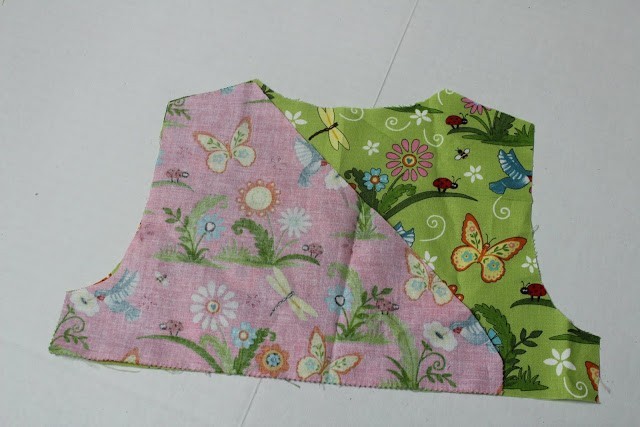 Stitch the side seam and the shoulder. Similarly, do the second and the front half. Remove the top of the front side and try to wrap halves Perda one after another.
Stitch the side seam and the shoulder. Similarly, do the second and the front half. Remove the top of the front side and try to wrap halves Perda one after another.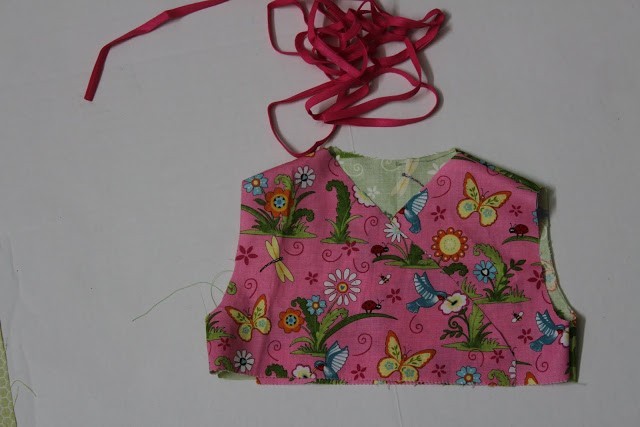 On the bottom line of the upper part (this also applies to the back, and the two halves of the forehand) stitched edging out of the ordinary or braid piping. It is more convenient to use a slash Bakey, as it is already perfectly folded in half and could well wrap the edge of the product.
On the bottom line of the upper part (this also applies to the back, and the two halves of the forehand) stitched edging out of the ordinary or braid piping. It is more convenient to use a slash Bakey, as it is already perfectly folded in half and could well wrap the edge of the product. The same border or bias binding obsheyte neck, which passes the smell in both halves forehand.
The same border or bias binding obsheyte neck, which passes the smell in both halves forehand.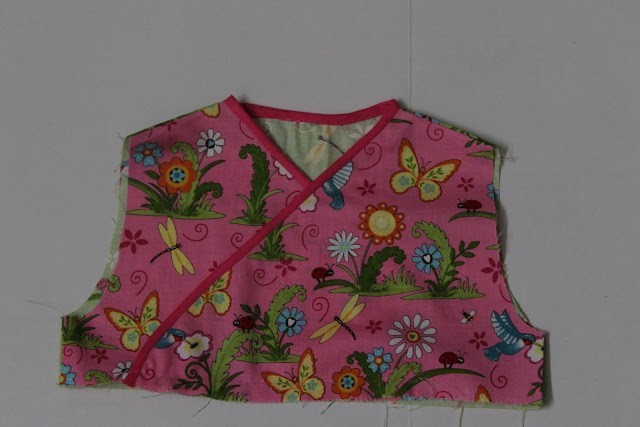 Now fold the top and bottom of the future tulip dresses together to faces were inside. Fix the joint tissues pins and then prostrochite dress. If we expand the product, it will look like an oval. However, little relief, because in places the sleeves fabric will stick.
Now fold the top and bottom of the future tulip dresses together to faces were inside. Fix the joint tissues pins and then prostrochite dress. If we expand the product, it will look like an oval. However, little relief, because in places the sleeves fabric will stick.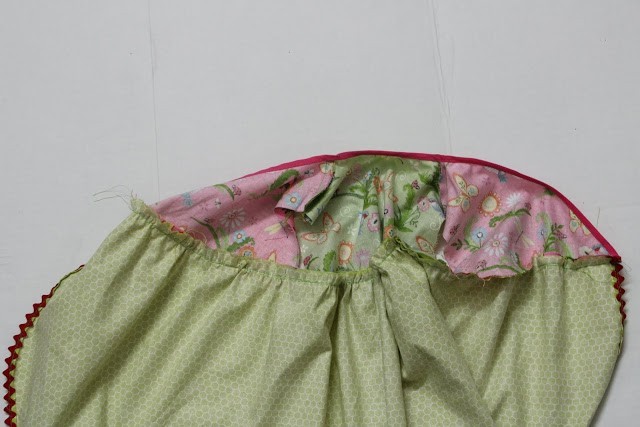 Bias binding obsheyte cuts hoses to the product looked neat. Decide which side will be closed smell, and the lower half of sew two beautiful buttons. In this place the top half, make two holes for the buttons. Obsheyte small stitches by hand, the fabric is not rastrepyvalas.
Bias binding obsheyte cuts hoses to the product looked neat. Decide which side will be closed smell, and the lower half of sew two beautiful buttons. In this place the top half, make two holes for the buttons. Obsheyte small stitches by hand, the fabric is not rastrepyvalas.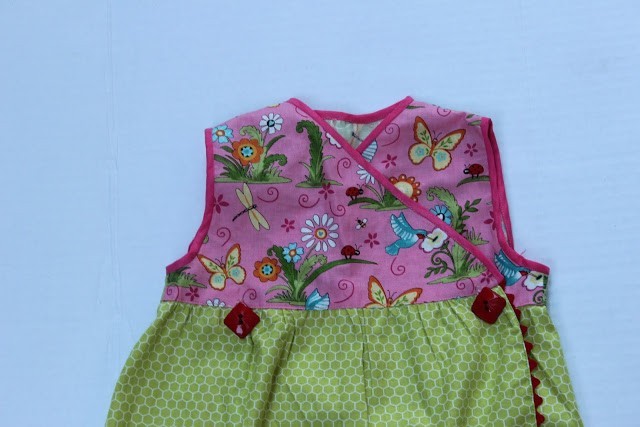 Get the original children’s summer dress! For more you can sew on a button, and the upper part of the product, mentally sketching the triangle between the buttons.
Get the original children’s summer dress! For more you can sew on a button, and the upper part of the product, mentally sketching the triangle between the buttons.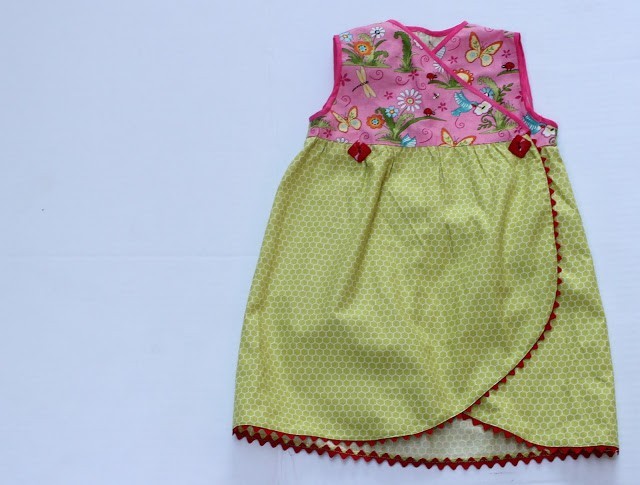
10+ Simple Arabic Mehndi Designs [2017]
Arabic Mehndi designs are different from Indian Mehndi. These are mostly detailed, have spaces, and sometimes resemble some architectural designs. Common designs include flowers and peacocks, which are very much known for its beauty and exquisiteness. Other designs include veils and swirls recurring in a geometrical template.
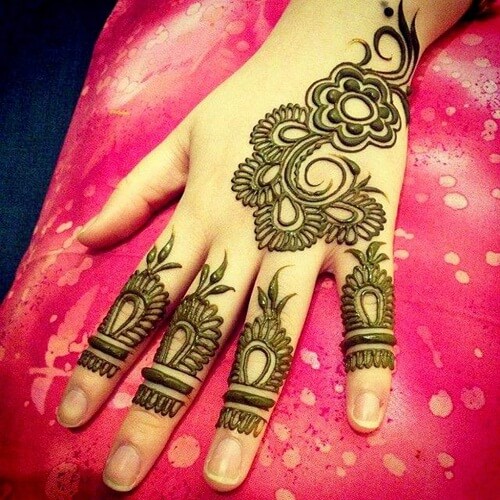

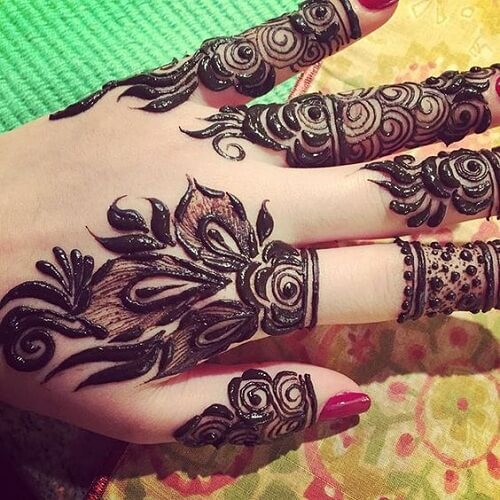
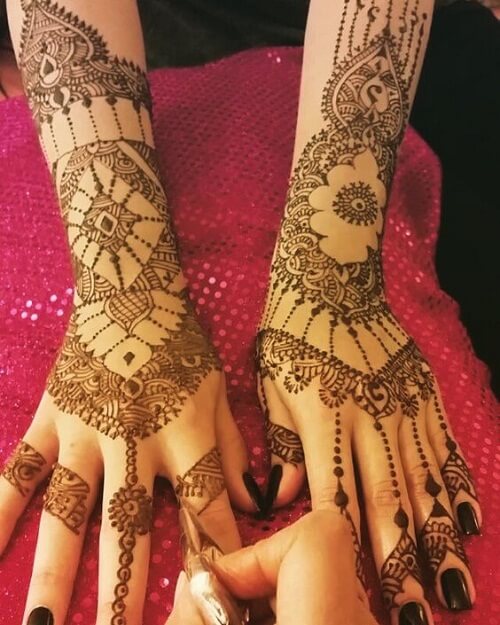
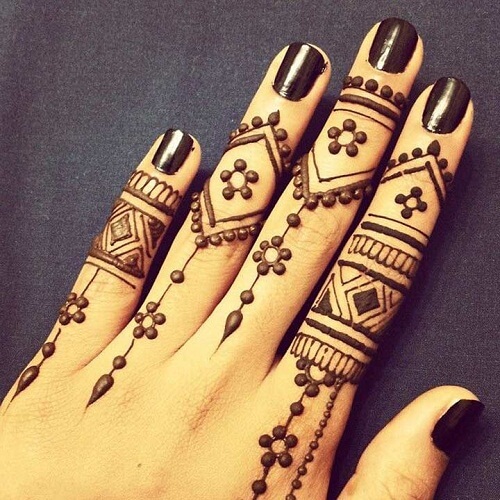
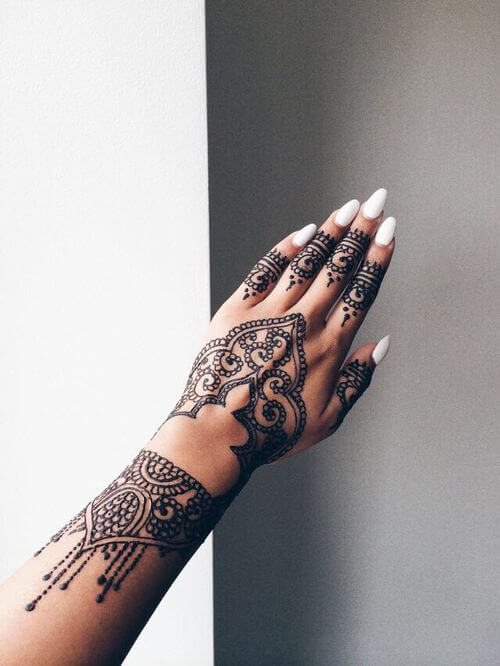
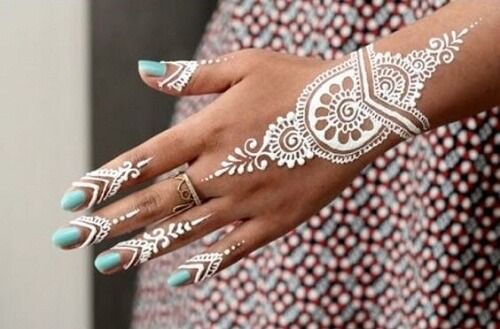

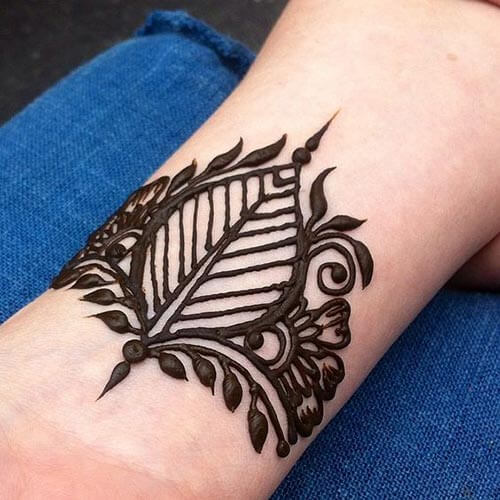
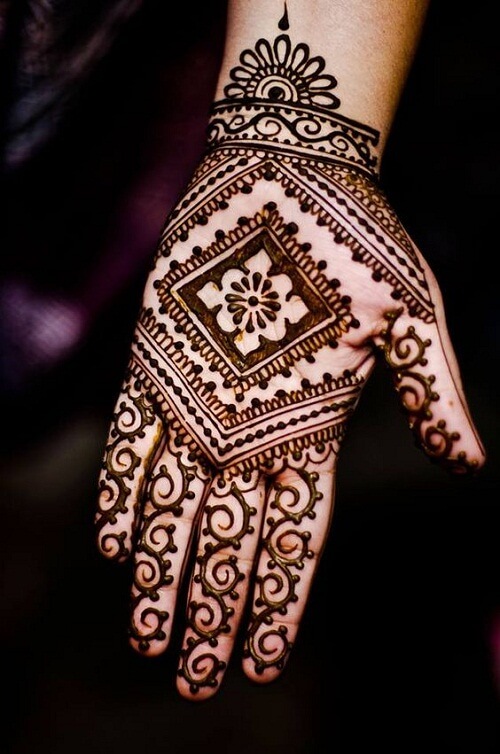
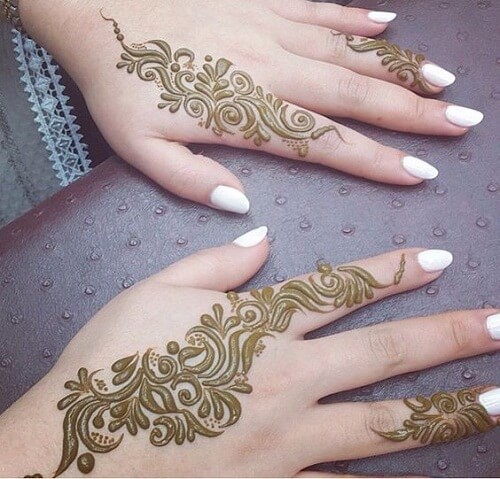
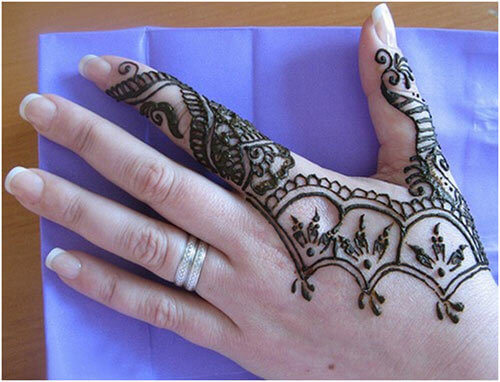
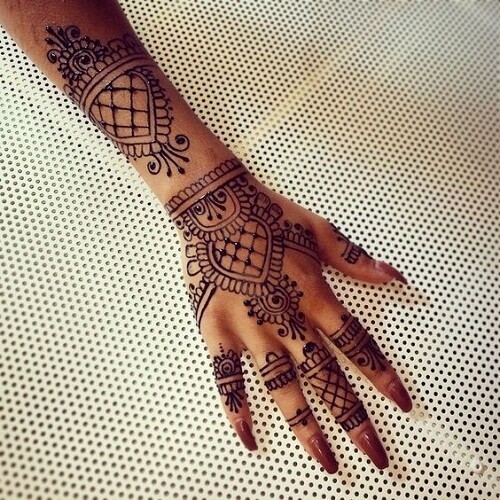

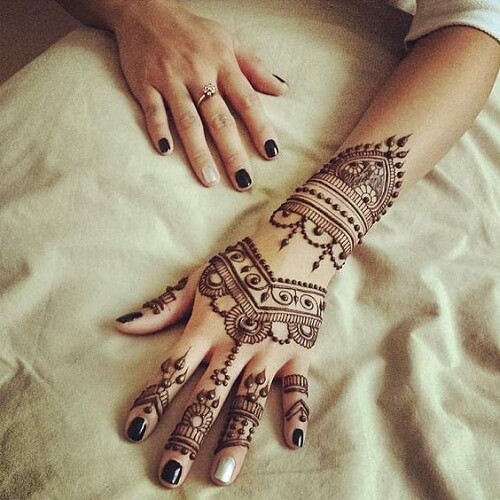

How to embroider the simplest sewing machine – Step by step
We shows you, who want to learn how to embroider a simple sewing machine.
You can embroider any lock stitch sewing machine, in which you can adjust the tension of the upper and lower thread. The most convenient – a foot Central bobbin sewing machines, which are free to work with both hands embroiderers. You can use the old machines, you inherited from grandmothers and great-grandmothers.
Modern cars are driven by an electric motor, and we need to get in the machine was manual or foot drive.
Unfortunately, embroider on a typewriter with an electric motor can not be! The fact that at low speeds (with low pressure to the pedal) of the motor shaft rotates unevenly jerks. If your machine rheostat (device in the pedal that changes the voltage) will provide the slowest rotation of the flywheel, and at the same time the needle movement is smooth, without jerks, it will be your incredible luck! My “Seagull” can not! And, frankly, I do not know of such cases, when the machine with electric allowed to do embroidery. A embroider can only be a small number of revolutions of the machine, since the movement of the embroidery frame may only be used between the needle punctures the fabric. For consistency of the hands and feet, which is sure to appear over time. And at the very beginning of your right hand will be almost constantly lying on the flywheel to make punctures tissue needle most accurately, according to the lines of the embroidery pattern.
It is important to set up and prepare the machine for embroidery. Let us deal with that!
Setting the machine to embroider
1. Remove the presser foot.
2. Lower the teeth tissue engine or completely remove them, if in the future you will be using the machine for embroidery only.
3. Adjust the tension of the upper and lower thread.
The tension of the upper thread when embroidery is weaker than the bottom, as the interweaving threads with embroidery should be on the wrong side of the fabric and not in the middle of tissue (s), as required by sewing. Knurled nut at the lowered presser foot rod is rotated counterclockwise.
Lower thread tension is adjusted by the screw on the bobbin case.
4. Install a needle that is appropriate to you. Needle number must match the thickness of the fabric and embroidery thread. (I should needle №90, as I usually do the embroidery on the average thickness of the fabric).
5. You will need round hoop with a low rim and a small diameter, which should be less than the sleeve machines or equal to that in the performance of embroidery is always enough room for torsion hoop.
Figure 6. embroidery that you want to do, it is best to run on water-soluble stabilizer .
The use of carbon paper or drawing transfer on fabric by priporashivaniya, when there is such fine material as a water-soluble stabilizer, it is the last century. Why I do not recommend these two methods?
Given the fact that now the majority of tissue in its composition contain elastic strands are stretched, they just, without fixing Dublerin or interlining (which, among other things, a further thickening of tissue), not zapyalit. It inextensible, transparent, water-soluble stabilizer allows you to embroider on and pile knitted fabric!
In addition, impaled on tracing paper embroidery pattern being transferred to the fabric with a special mixture of kerosene and tooth powder or blueprints (wherever it even take this bluing?), Is a picture that still need to guess. As I have from the very beginning of studying embroidery (as it was 25 years ago) refused priporashivaniya, I have no confirming my view photos. But, by analogy, look at the photos Skolkov lace insert on the reverse. Try to understand what kind of pattern? Bitmap priporashivaniem around and looks.
Compare now with a full weave pattern! It is quite another matter!
7. Zapyalivaem fabric with printed pattern or a seasoned stabilizer in the hoop.
On the table lay a large outer ring, on top of it – the fabric, and then put it on top of the fabric smaller inner ring, press it while pulling the fabric, carefully observing the squareness of equity and weft threads at an angle. The tension should be very tight as a drum . If the fabric is badly tense, then it will move down-up, together with a needle and suture not work. The needle thread is not grab the bottom of the shuttle will be skipped stitches.
Similarly, there is skipped stitches if the motion occurs hoop lifting of them from the surface of the needle plate.
Attention! Remember at the beginning of the work to lower the presser foot lever! This is very important! Right on the wrong side of the thread starts to zigzag, and you do not see, do not notice is a violation of stitches, yarn entanglement will not be obvious.
And never turn the wheel in the opposite direction! There will be an open thread!
You may need to weight wheel pedal to give it the necessary momentum for the passage of “dead spots.” It took me! The wheel, coming to the “dead point”, not having the right inertia for its passage, stops and starts moving back in the opposite direction, immediately breaking off the thread!
So, before you start checking:
– Correct tension of the upper and lower thread (a needle and shuttle);
– Tension of the fabric in the hoop;
– The position of the presser foot lever;
– To put the stitch length to 0.
Bring the needle under the fabric in the embroidery frame, lower the presser foot lever, turning the handwheel with your right hand on yourself, do the puncture needle and the tissue, taking the lower thread a needle, pull it up.
Secure the beginning of stitching a few strokes of the needle without moving the fabric, that is, making punctures in almost the same spot.Threads trim small scissors.
Try to scribble in a straight line, making parallel lines, spirals, ensuring uniform, beautiful stitch, without departing from the line drawing figure.
Work patiently until then, until you gain the appropriate skills. We need coordinated work of the hands and feet, and it just does not work!
Quickly working his feet and slowly moving the hoop – get small, frequent stitch. Quickly moving the hoop slowly and legs – get big, long stitches.
Remember that the beauty of your embroidery depends on your accuracy, the accuracy of the figure, the accuracy of your stitches used sutures, stitches, beauty yarn used.
Always simple embroidery pattern is much more interesting, appealing looks in the material!
And how embroidery can enrich, refine and improve your product and even to correct figure flaws, we all know.
Basic embroidery machine stitches
With the machine can perform many embroidery stitches, but it is much faster and easier than by hand.
The main seams are stitch and satin stitch roll (cordon).
The lines – this is the easiest type of embroidery: a simple line, vilyushka, loops, spiral mound.
Simple line – this is the most frequently used stitch in embroidery. Maybe self-embroidery.
This small, identical, straight stitch length only 1-1.5 mm. Simple stitch embroidery pattern obstrachivayut line, fill the space inside any embroidery fragments make flooring to increase the embroidery stitch, creating shadows with tonal embroidery, portraits.
Stitches “vilyushka”, “eight”, “spiral”, “mound” – also carried out small, identical stitches, eyelets.
Satin cushion “cordon” is also often used in embroidery. First you need to make a simple line along the contour of the figure, then take the first uncured x / w thread №10-40 in one or double folding and securing a number of blows beginning thread cover its part of the cross, the same stitch, needle punctures trying to do as much as possible close to the cushioning filaments . Overlapping spacer yarn should be so dense that it totally was not visible. And yet it is desirable to pick up the thread in the uncured color embroidery.
Properly executed satin stitch roll must be flat, convex, narrow and almost no wider than the spacer yarn (or 2 threads).
Spacer thread gives a nice rounded shape roller , while embroidery and scalloped “Richelieu” gives a solid, strong, beautiful land. By the way, for the strength and breed can make a sling spacer yarn and further processing it with a roller.
” Richelieu” – this delicate embroidery, which is the pattern of the fabric, satin steering roller, which cut kokrug background. “Richelieu” is not a breed, and Brides.
Brides – is an air line in the embroidery “Richelieu”.
“Richelieu” can be done against the backdrop of strochevoy grid.
To perform strochevoy grid needed to plain weave fabric. If the threads of the fabric in warp and weft of different thicknesses, and the calculation vyderga threads to do different to cells (holes) were square grid. After vyderga reticle of the remaining strands entwine embroidery thread, moving diagonally across the square, starting from the corner.
Glad, poluglad, slotted smooth surface – it’s also very often used in embroidery. Perform expanse of neat, closely spaced stitches arranged parallel to each other or at a slight incline.
There is a type of embroidery that I really like it – embroidery couched stitch technique. It can be a nice thick thread or twisted shnurochek, soutache lay on drawing.
With Soutache. Previously posted small loops Soutache, fixing their hand-stitched, and then made a line on the machine.
Many types of embroidery (stitching, smooth surface, Openwork, “Richelieu”, lace, appliqué, satin stitch art) in their development and implementation of high-quality extremely expand your artistic, creative possibilities.
I really wish everyone who sews and loves this business, learn how to embroider! The more the greater will be your area of interest, skills, the steeper you’ll be a master! I wish you this!
With love and respect, Thank you.
Source: livemaster
Beautiful Pink Bootie Making

